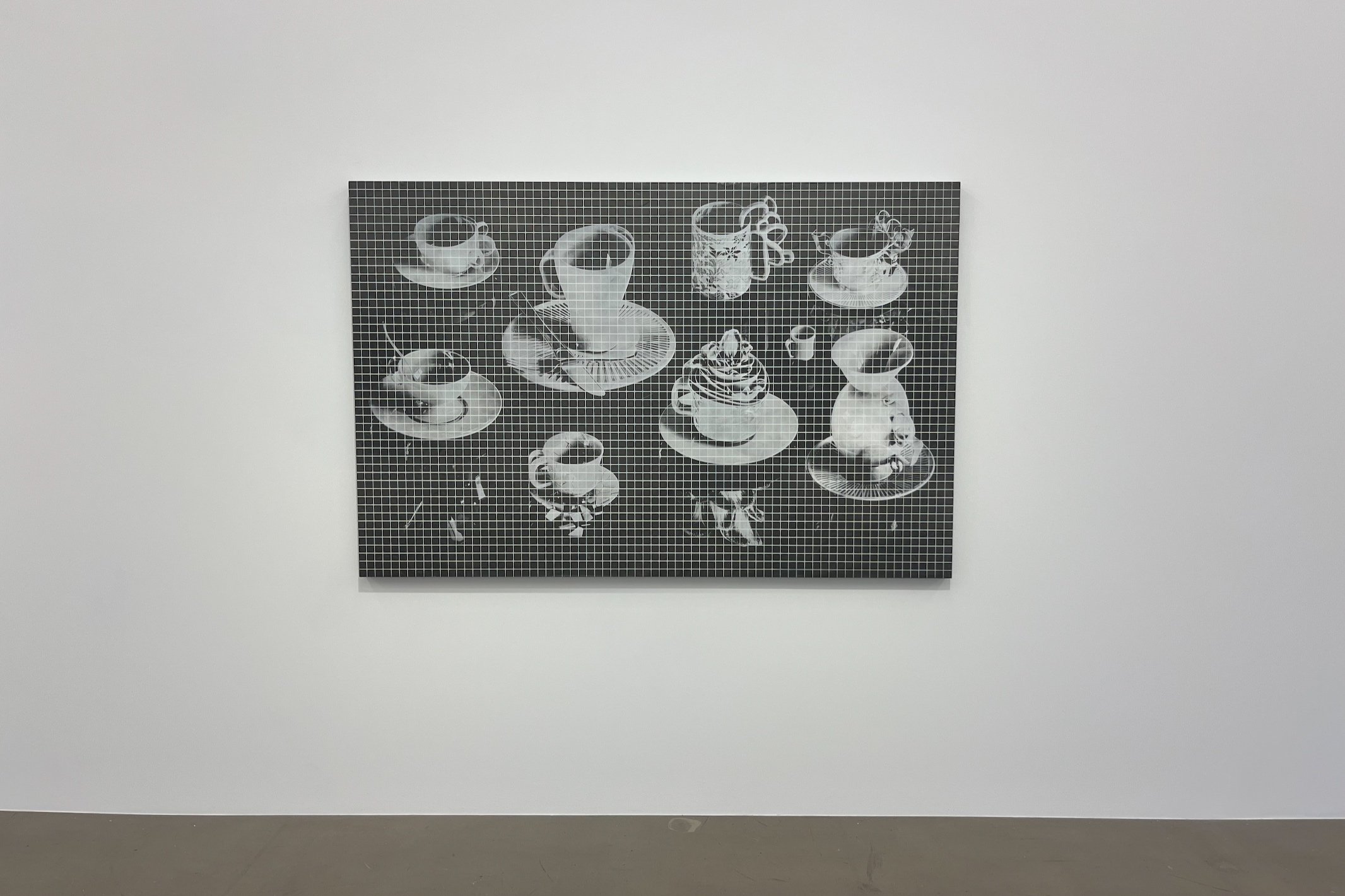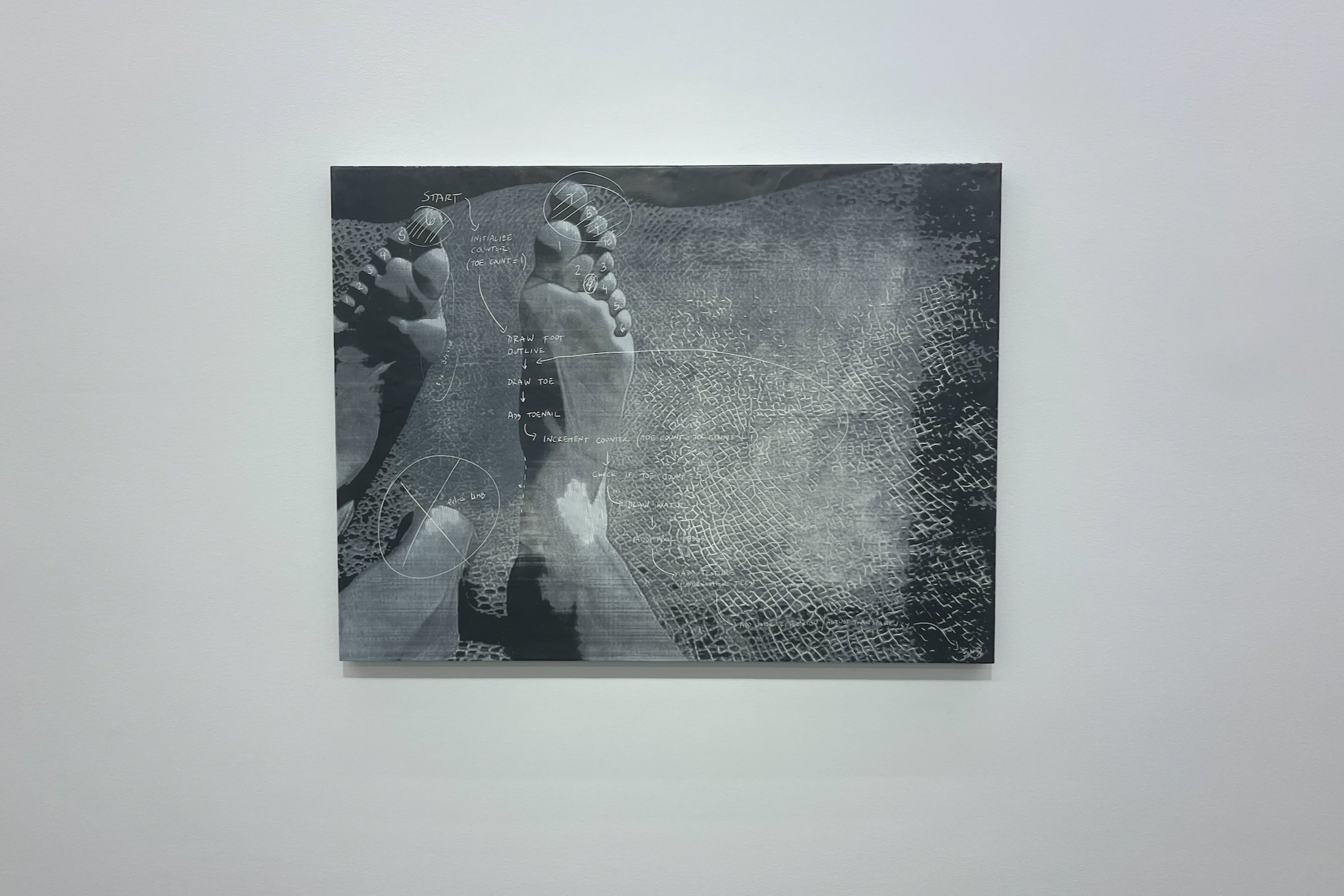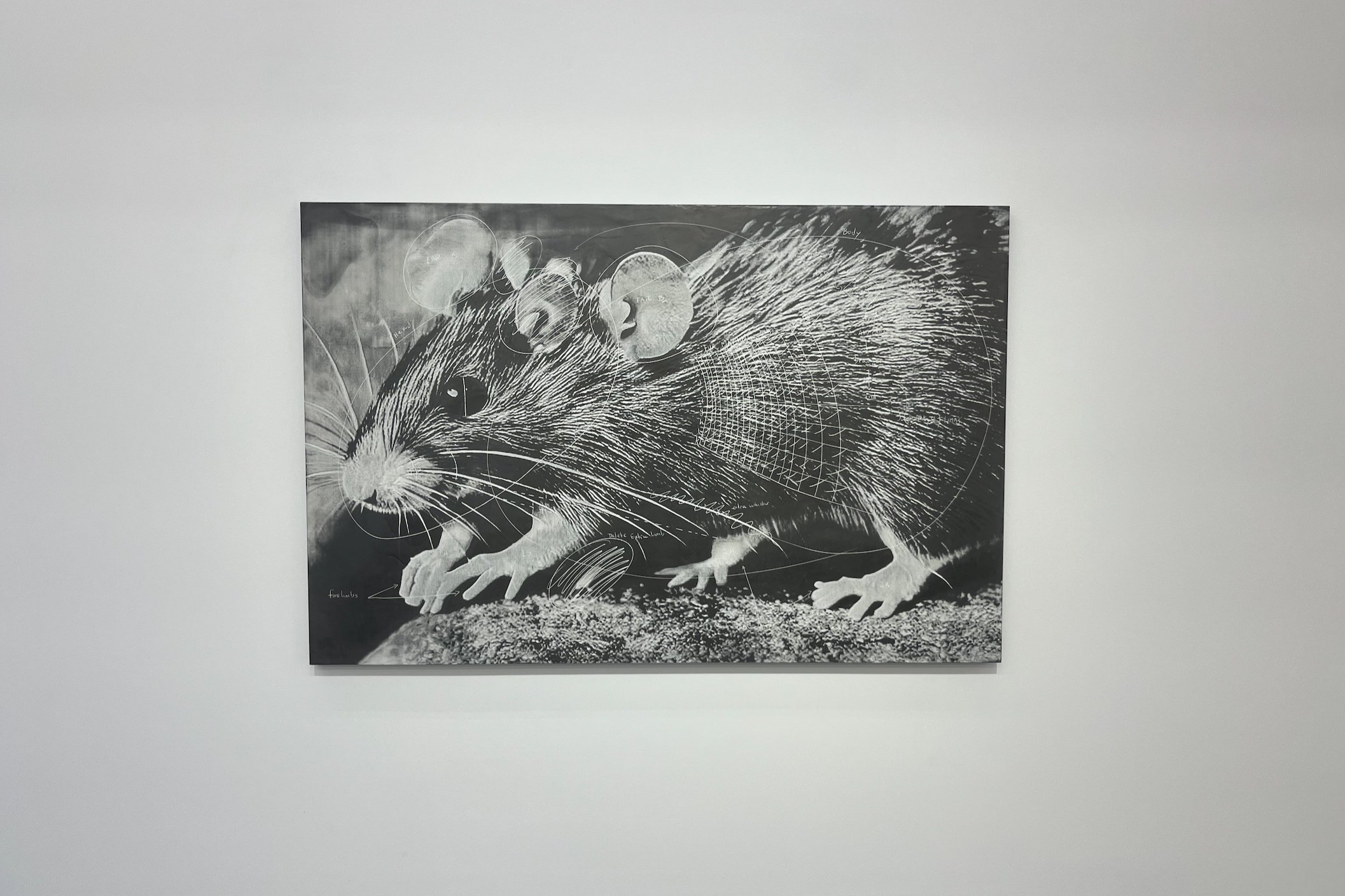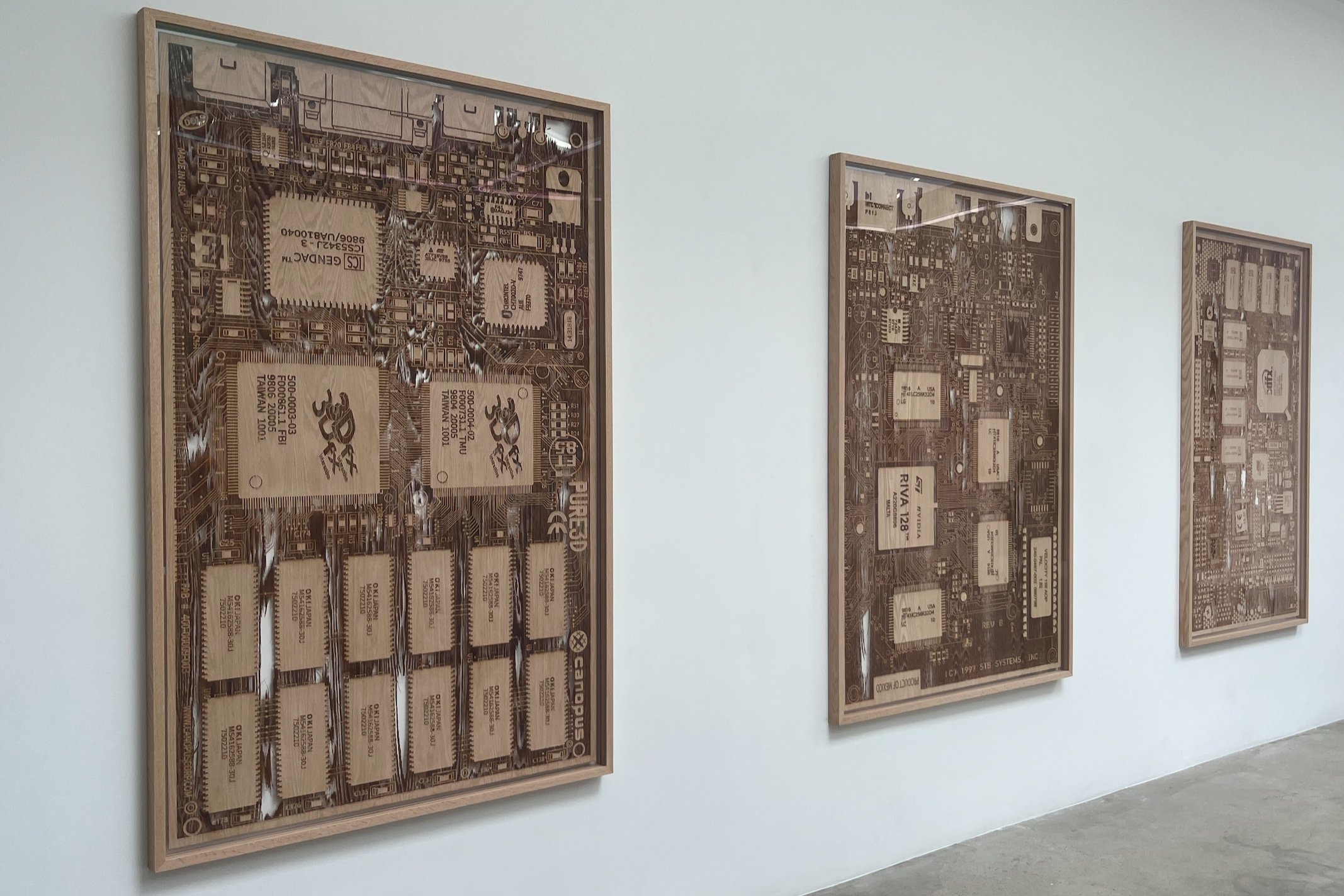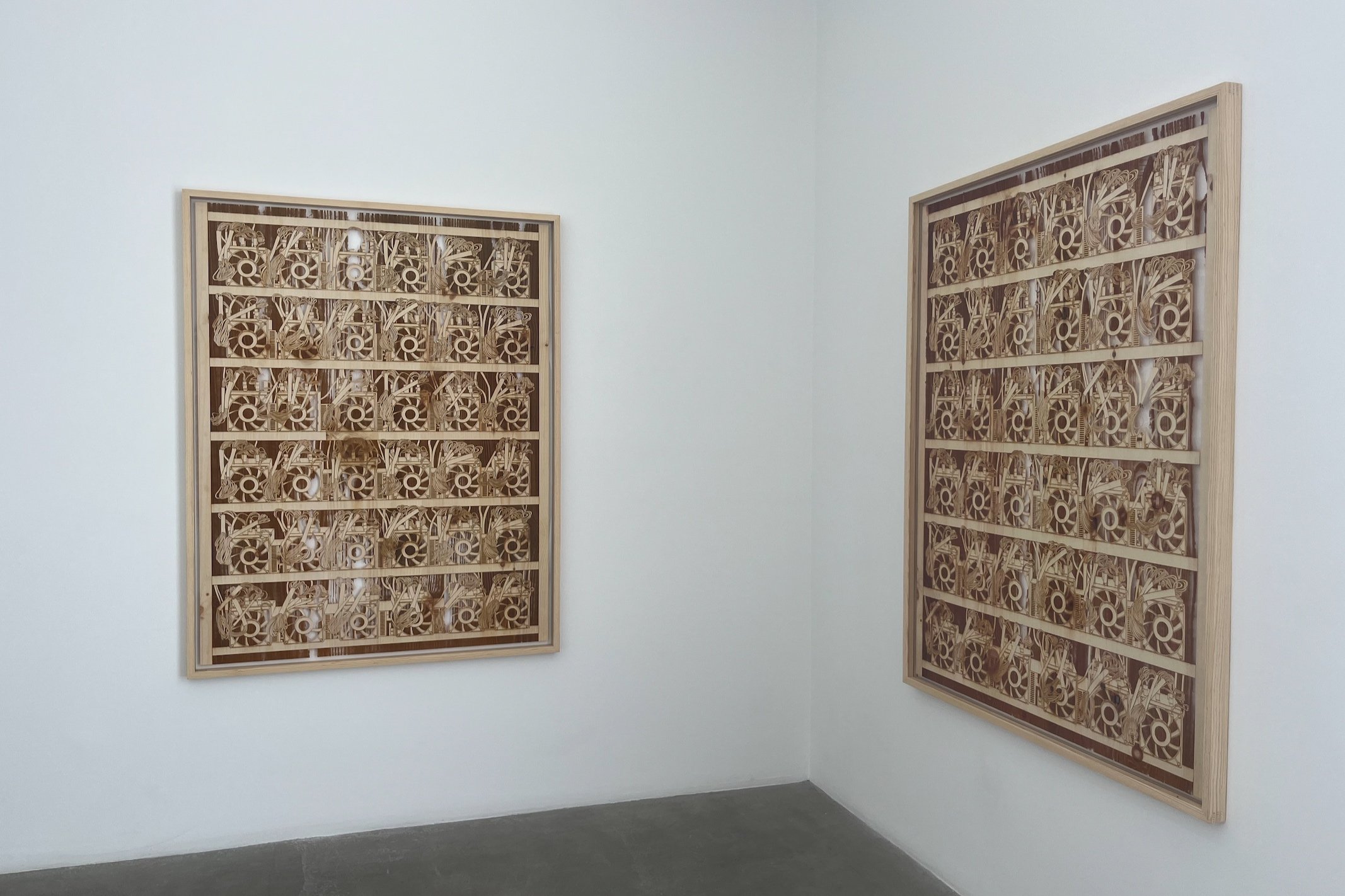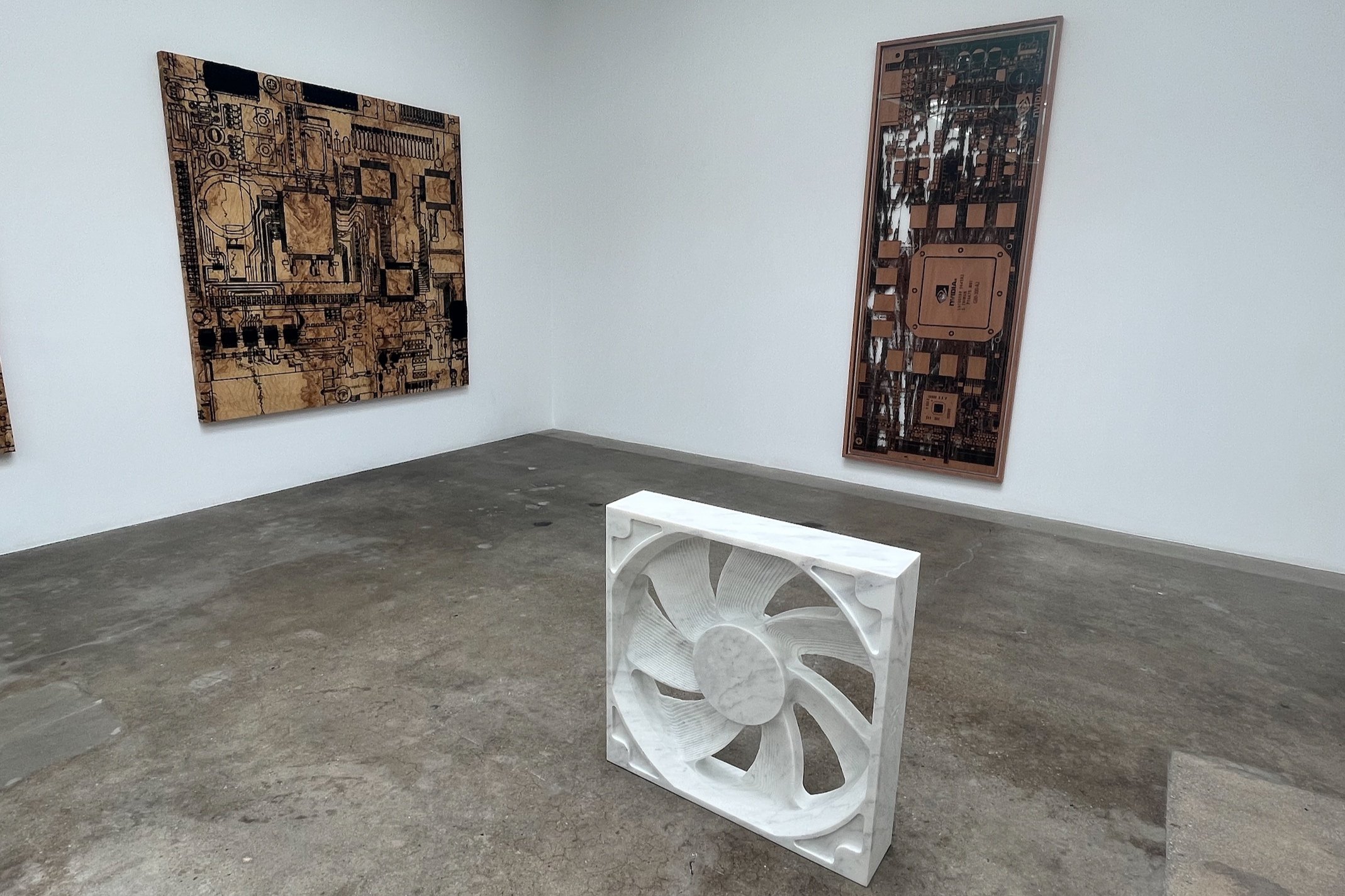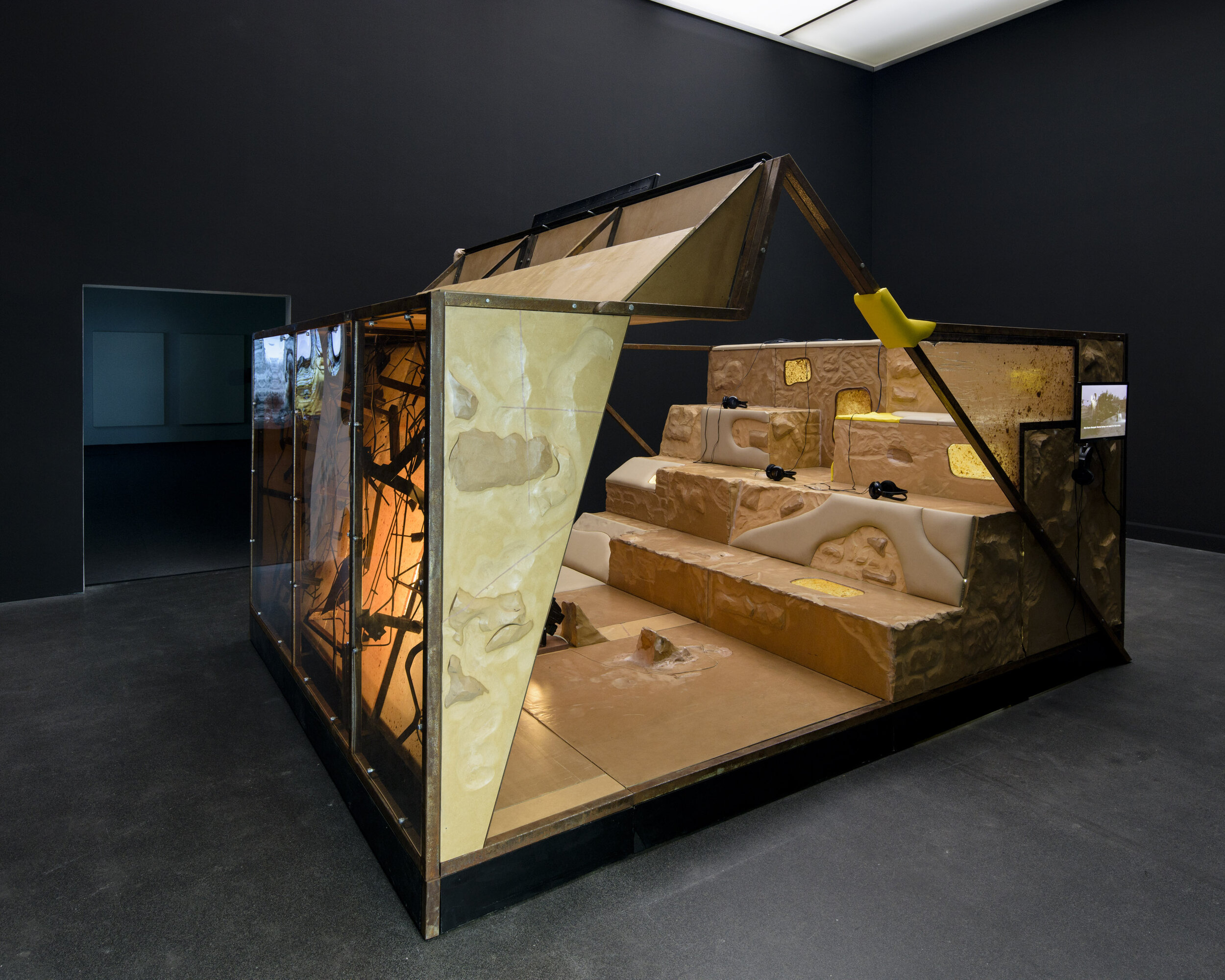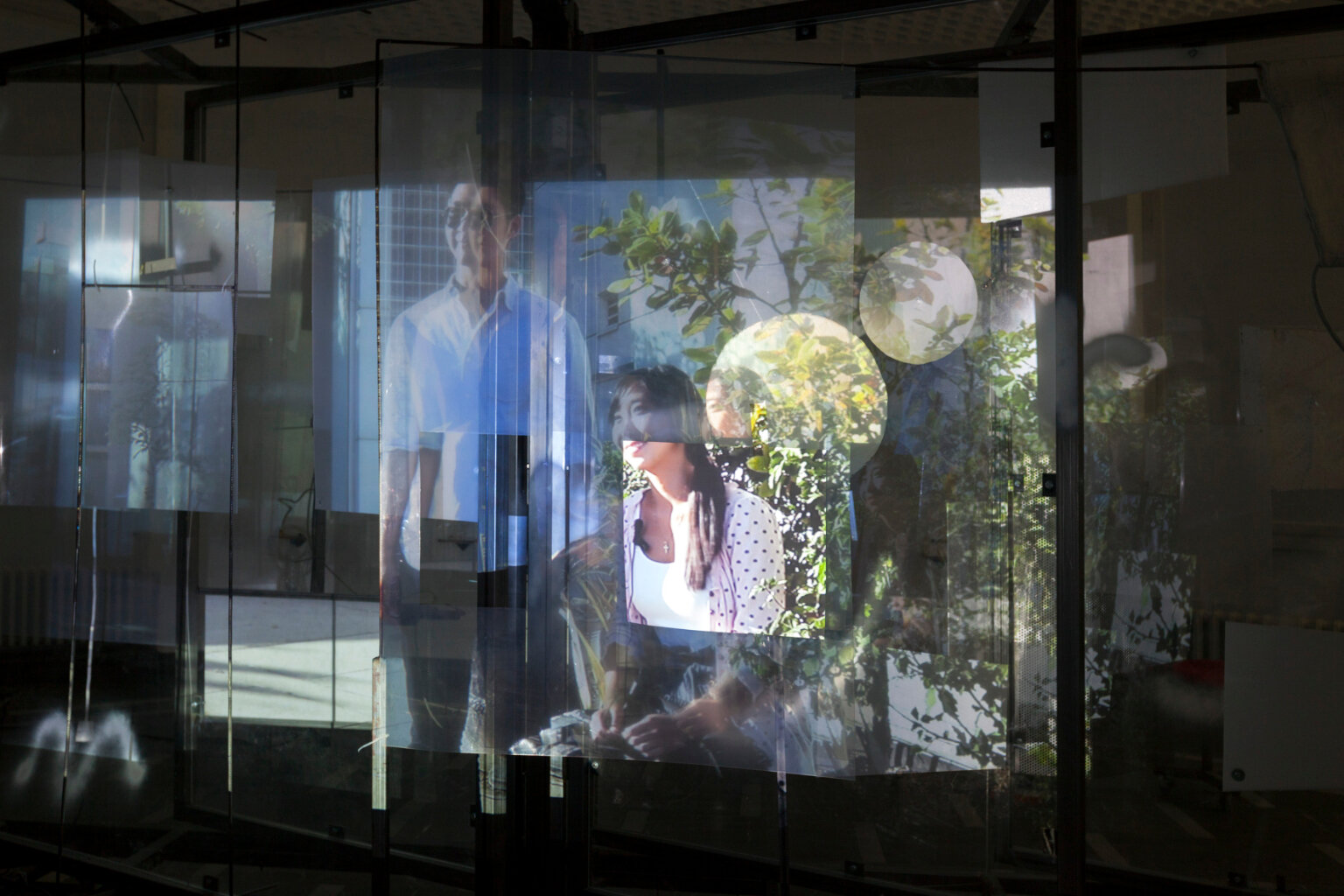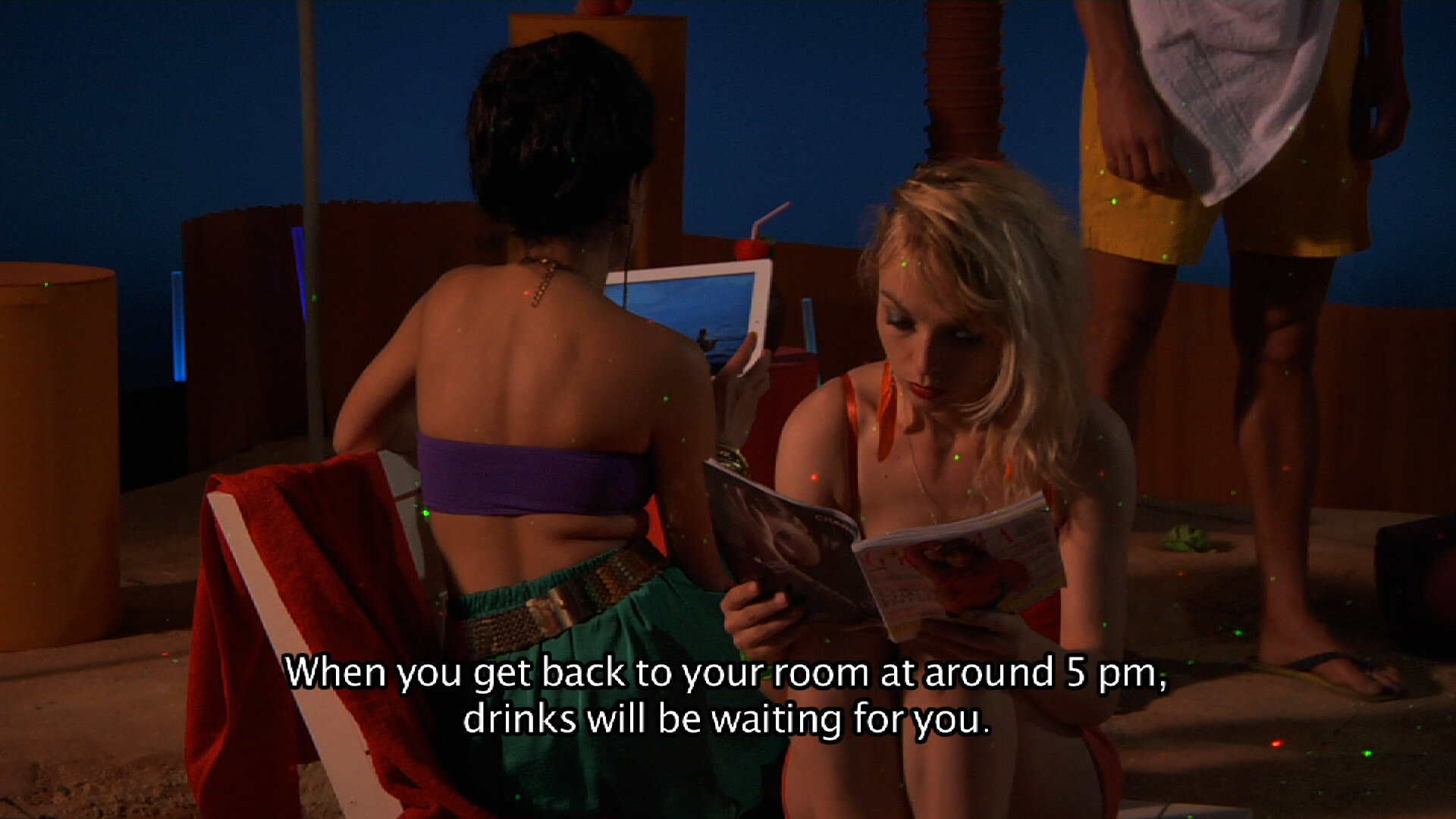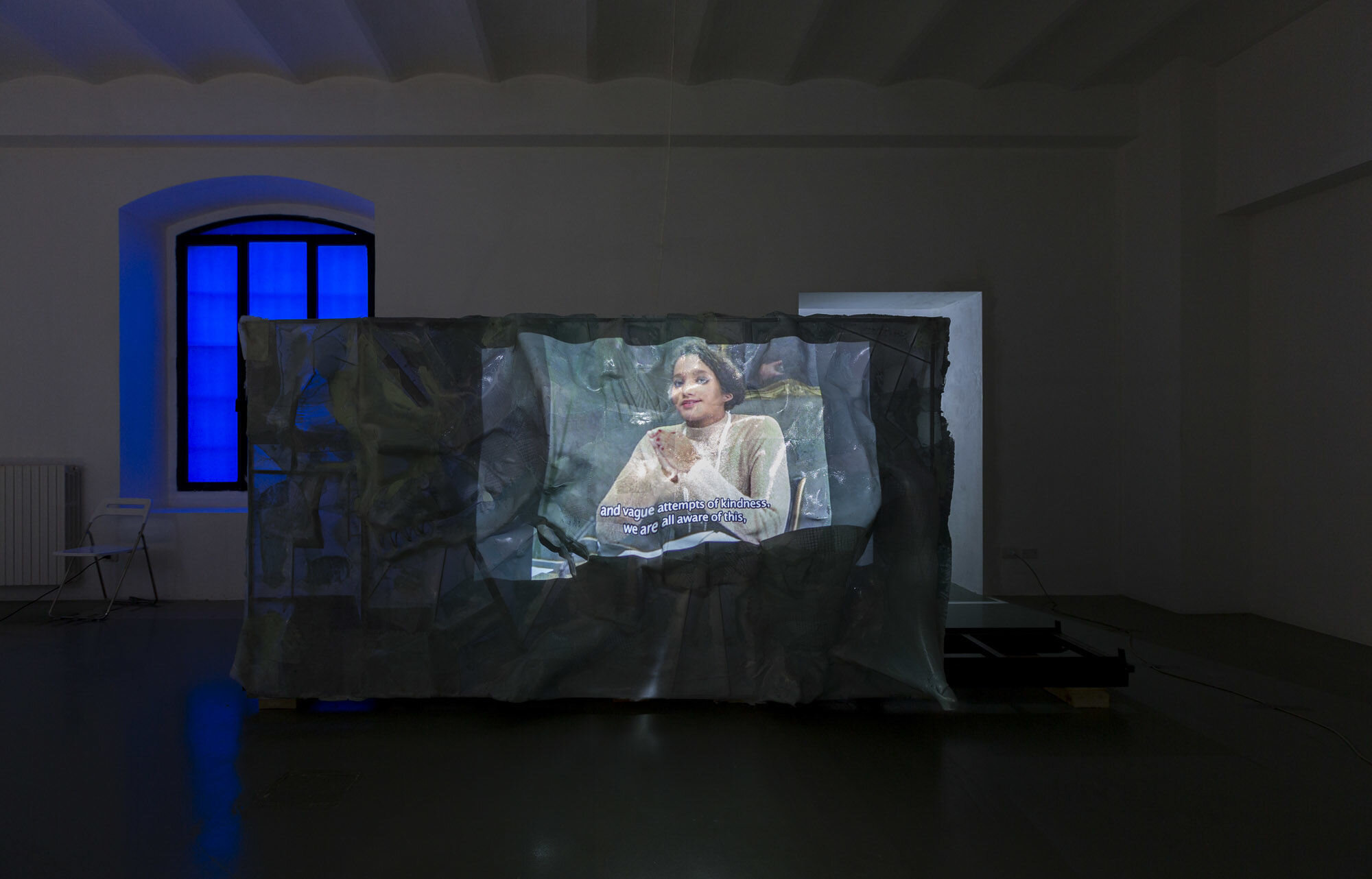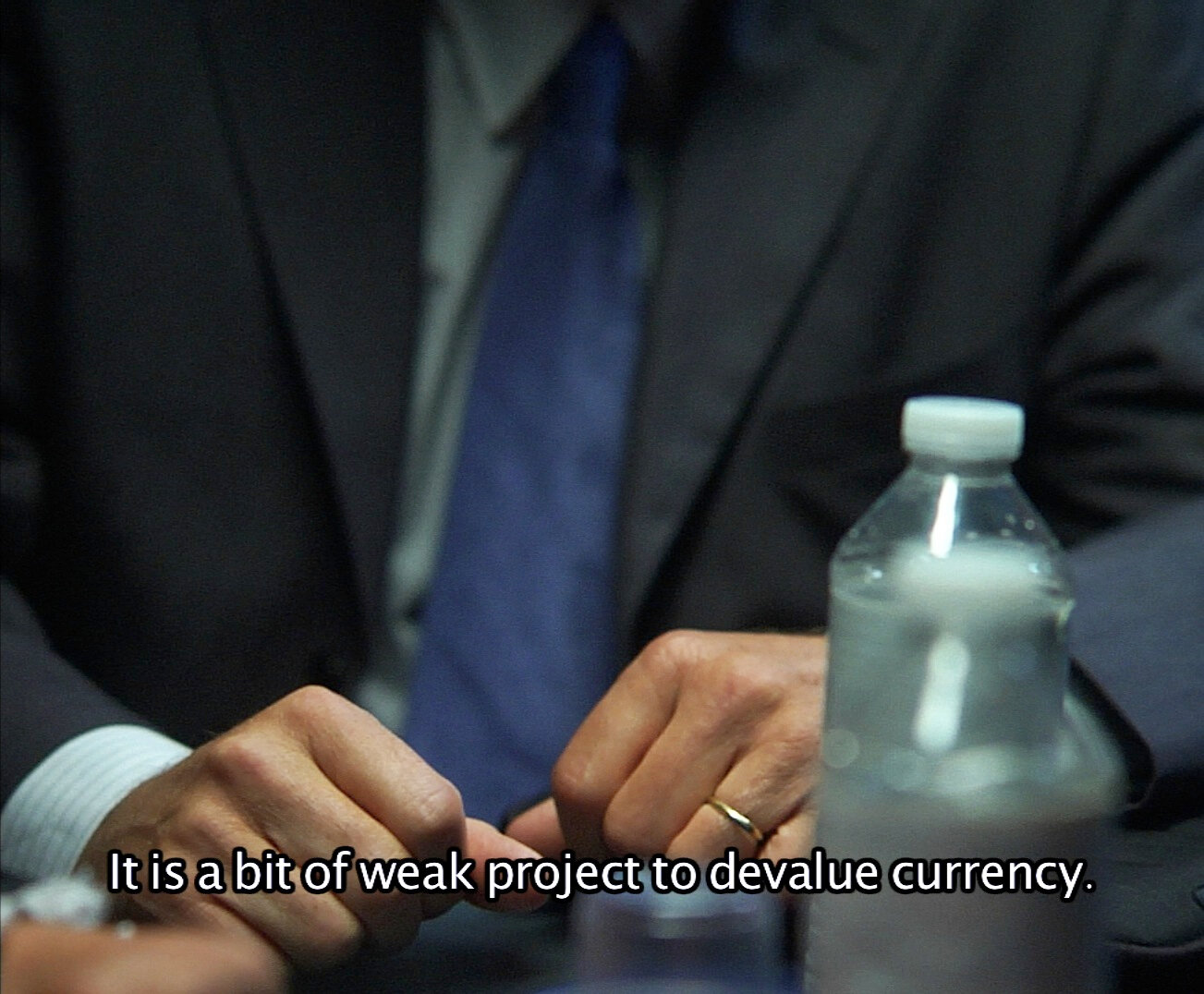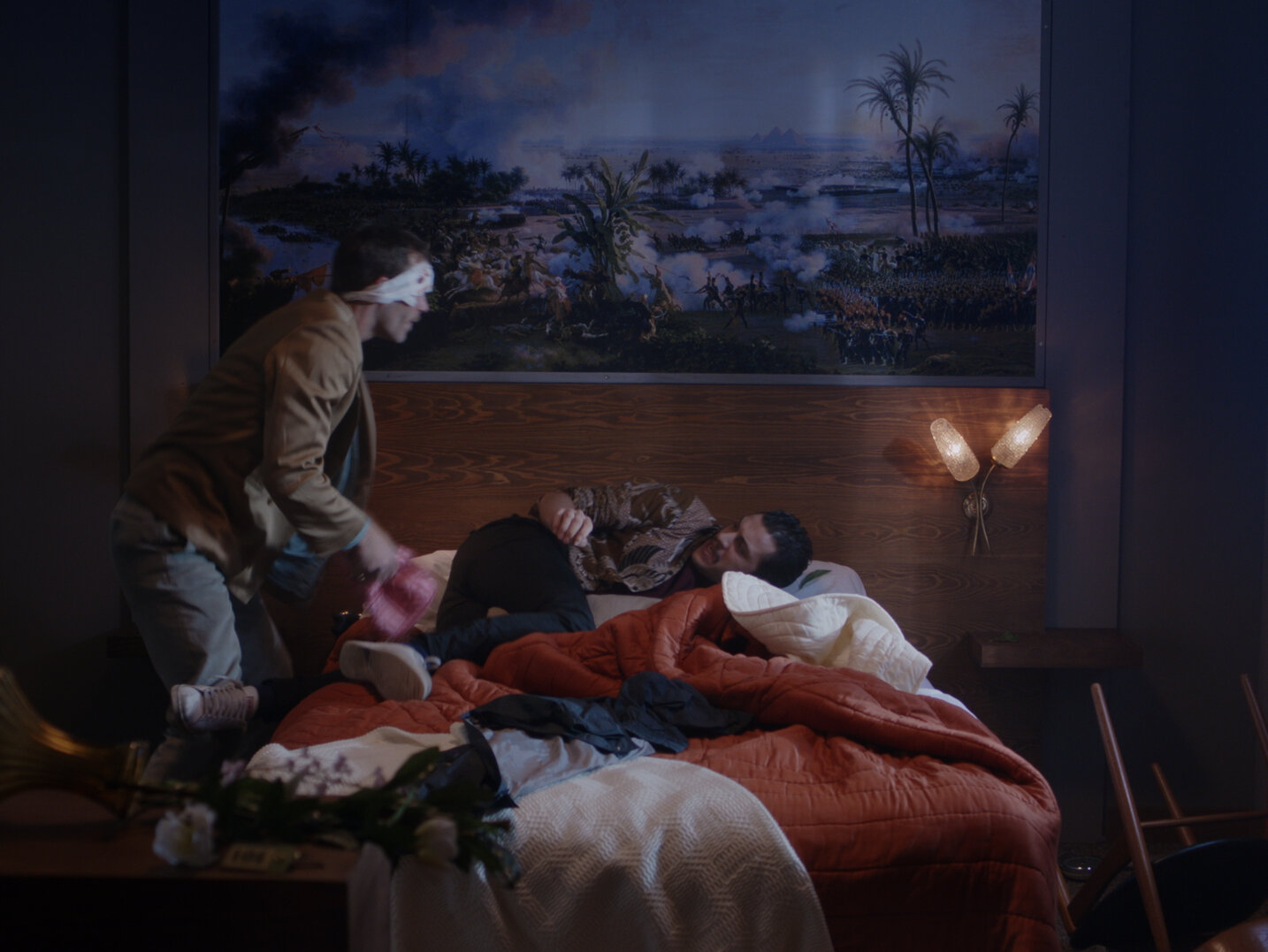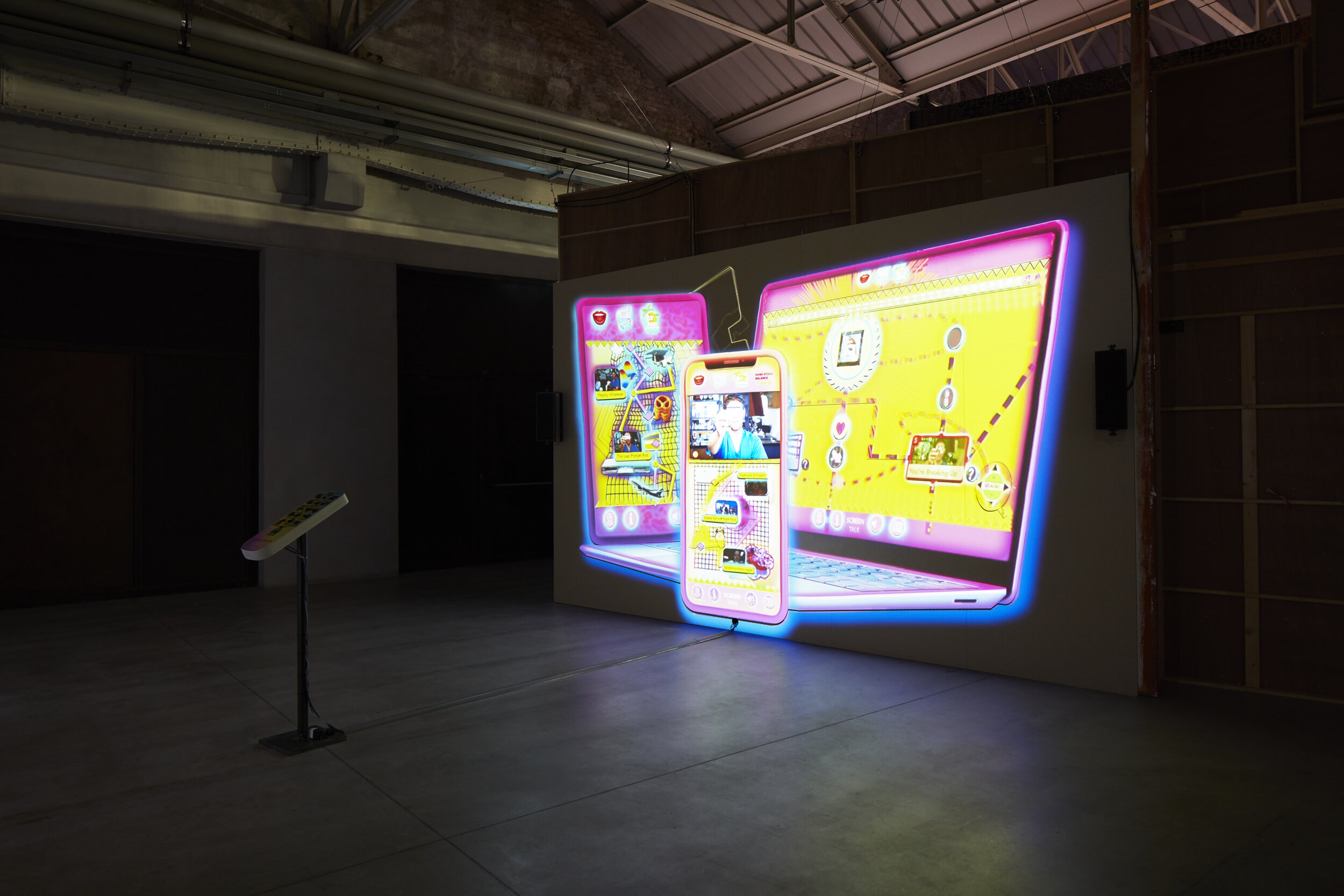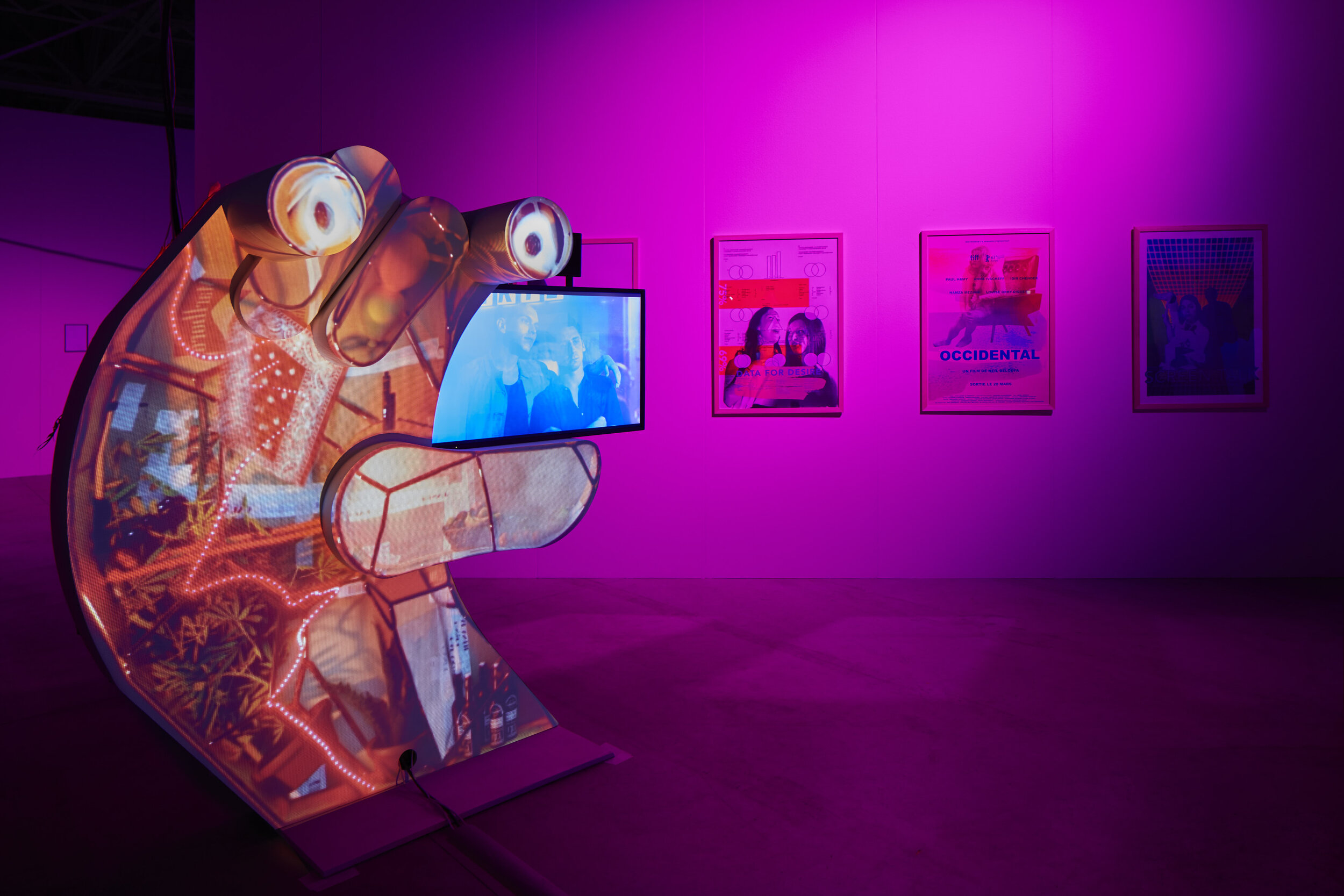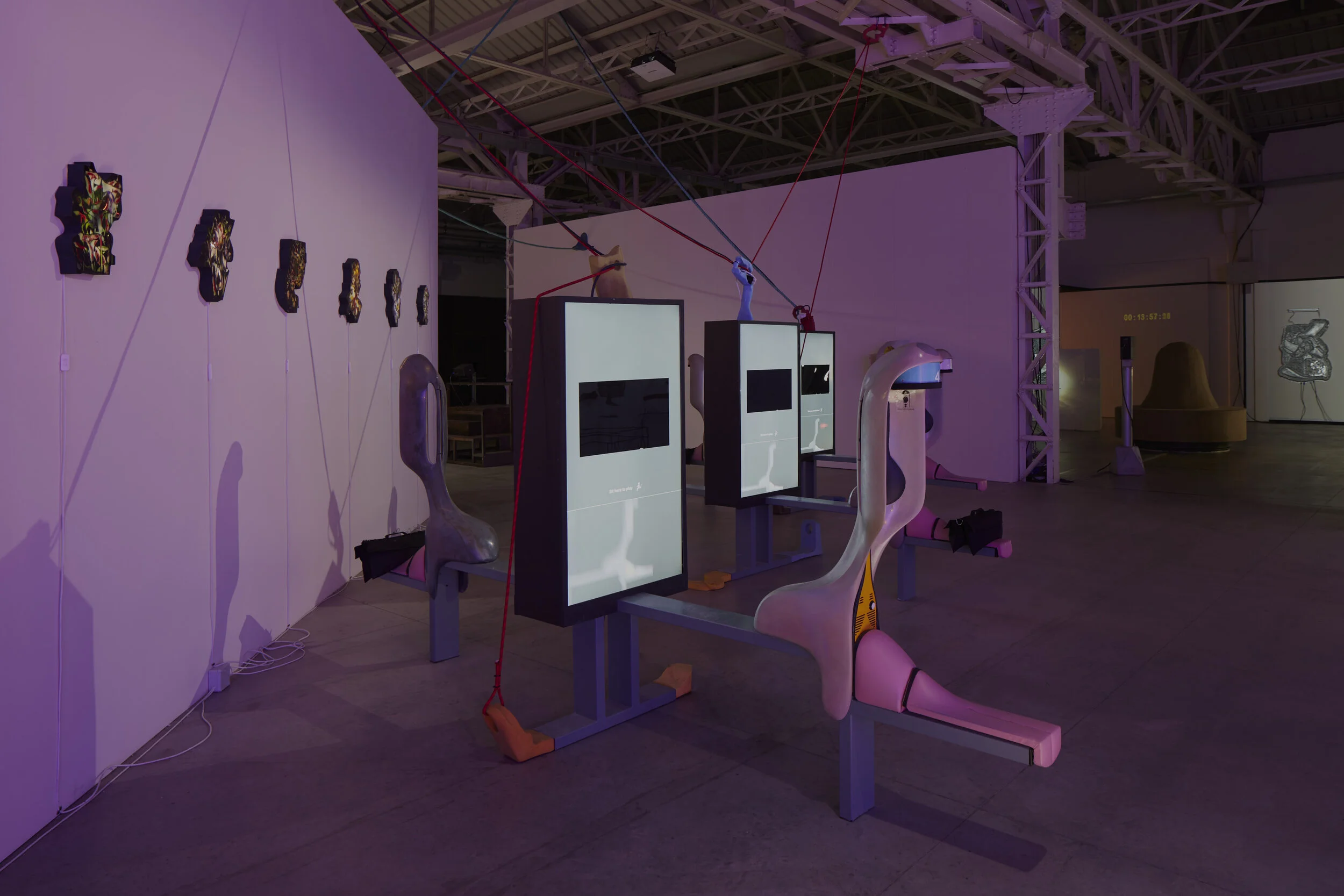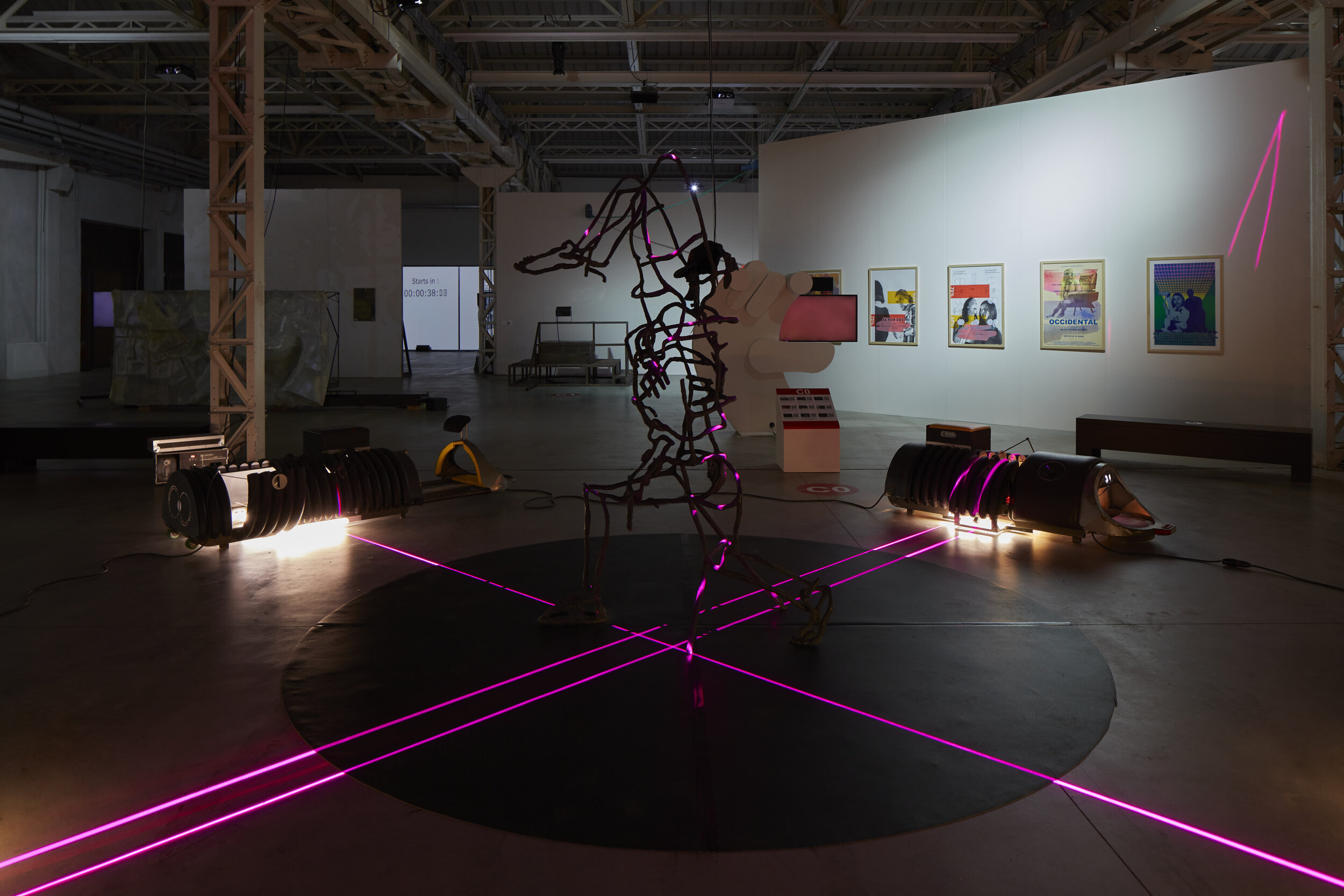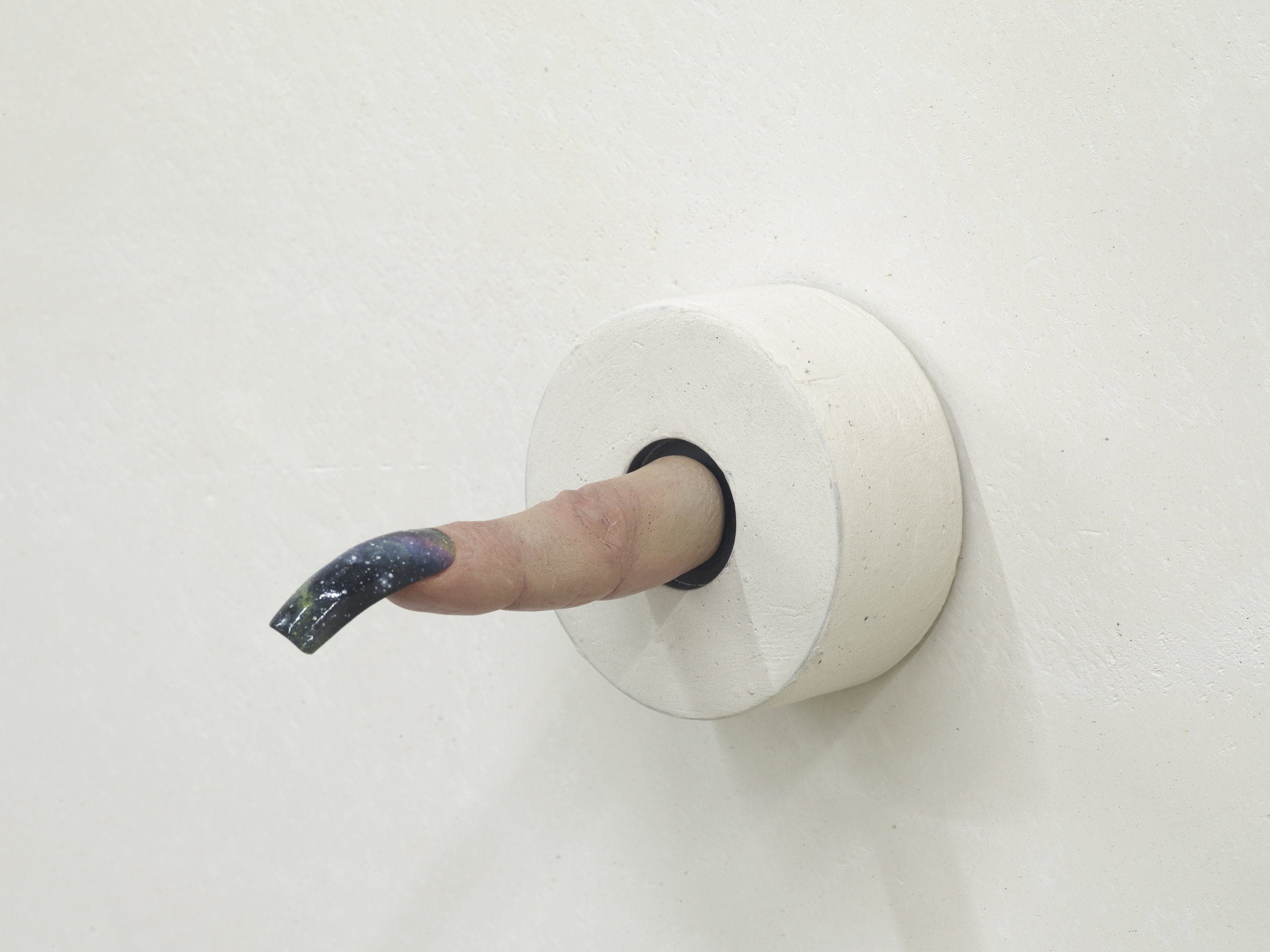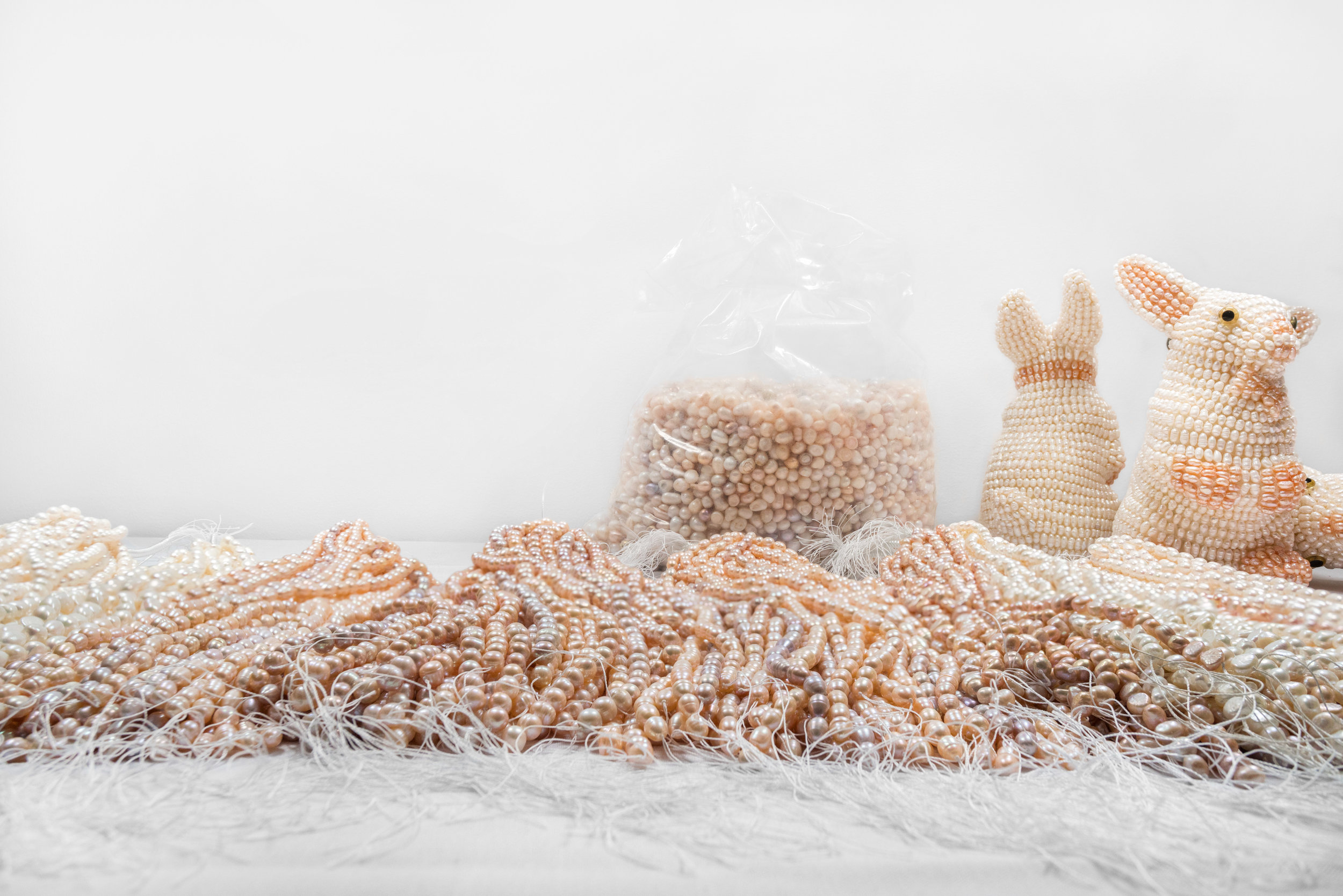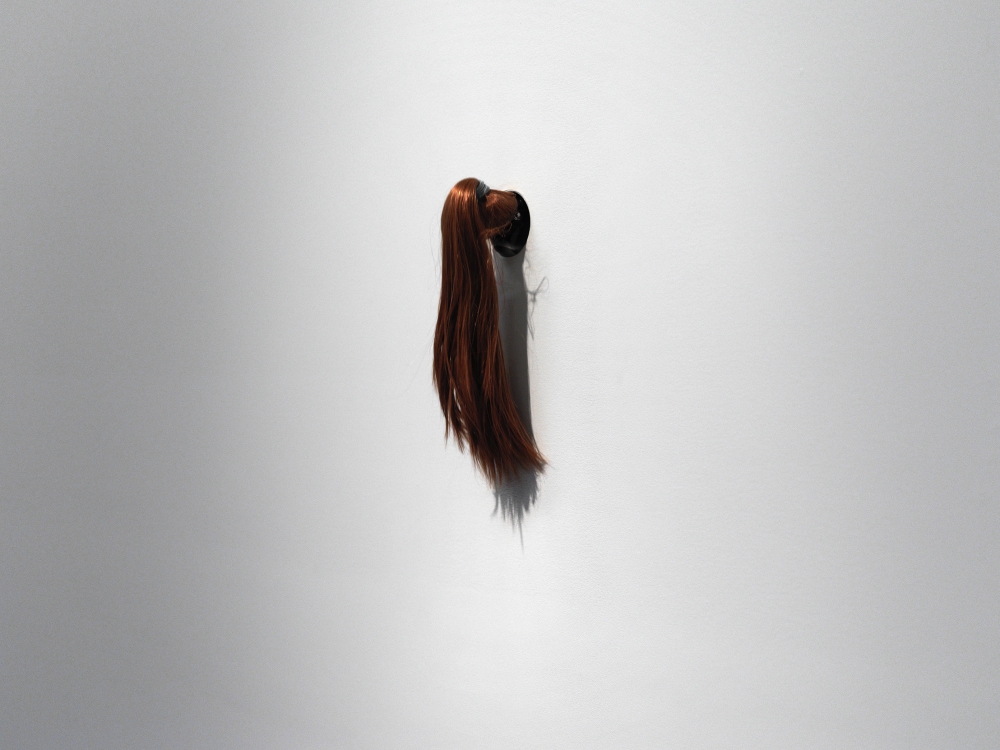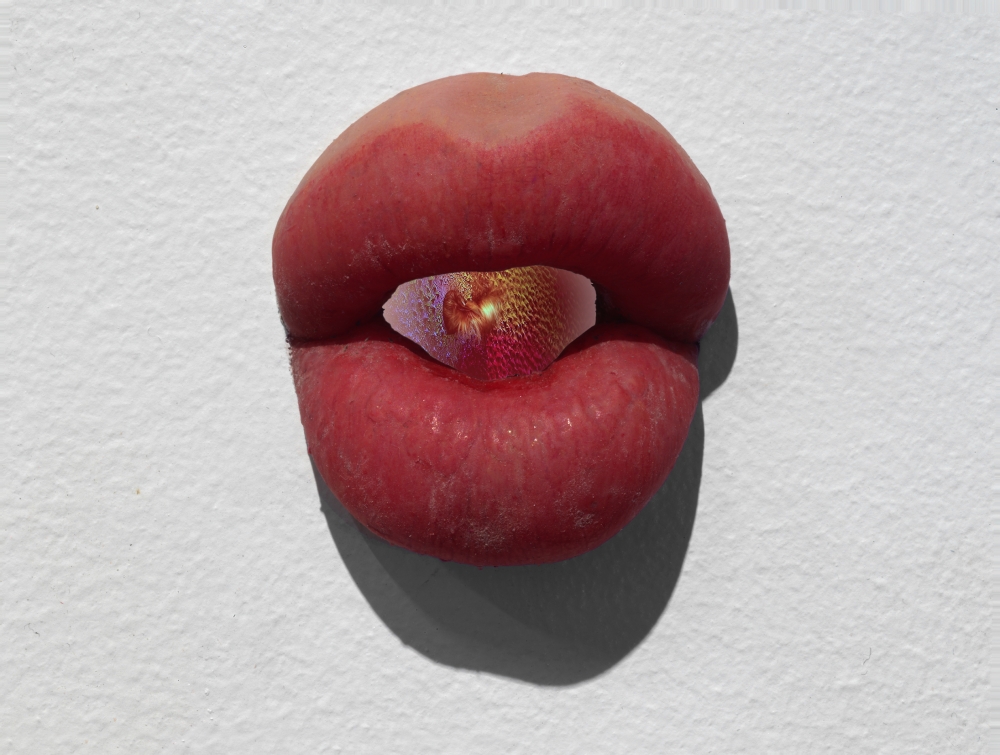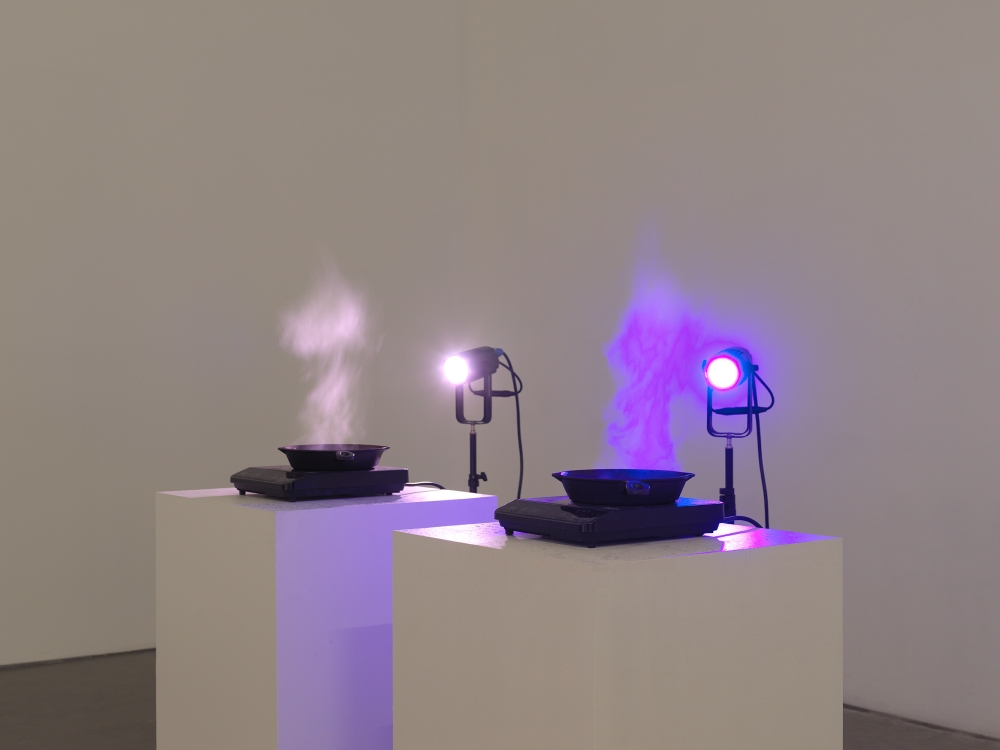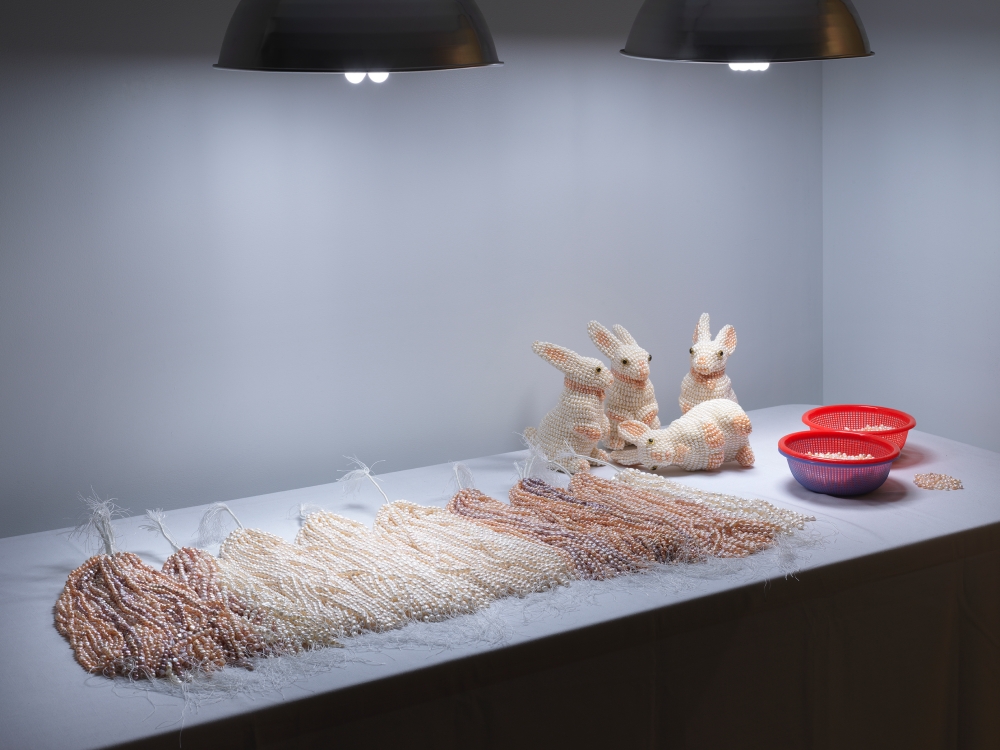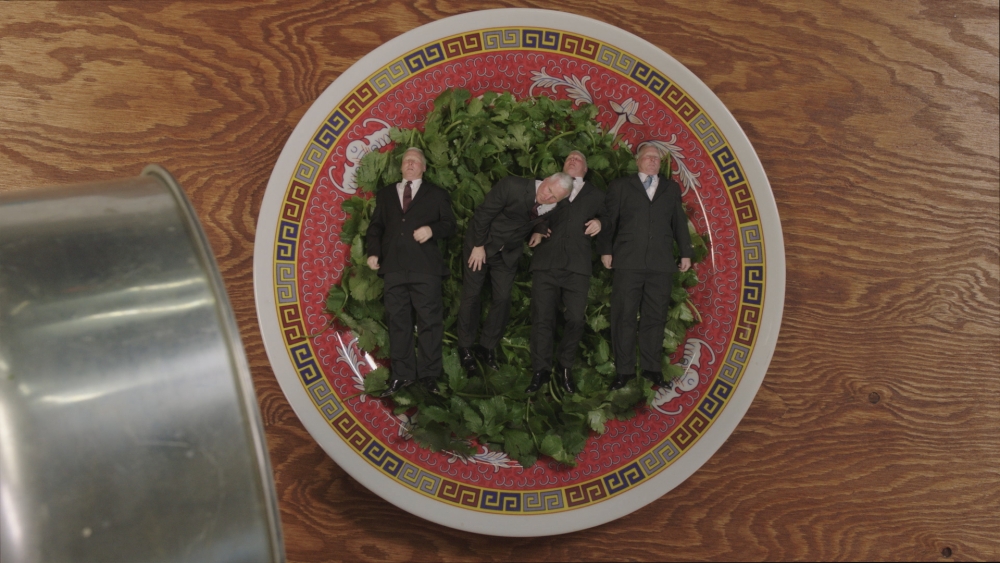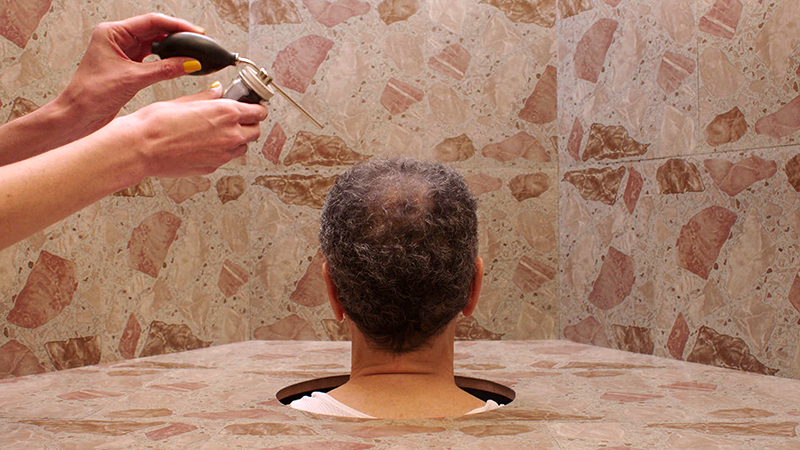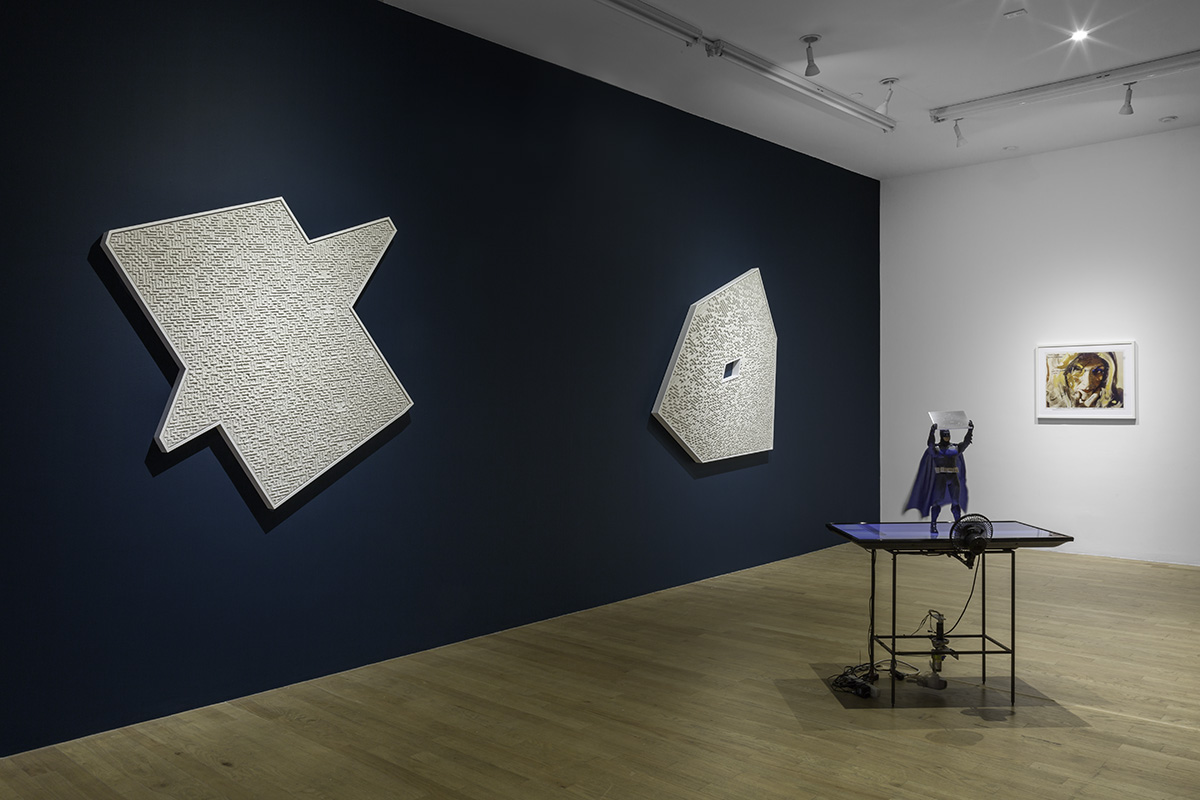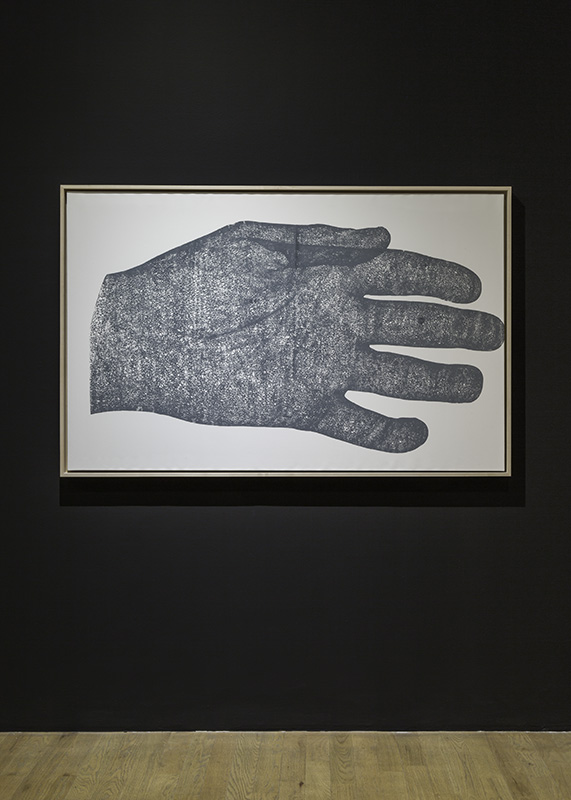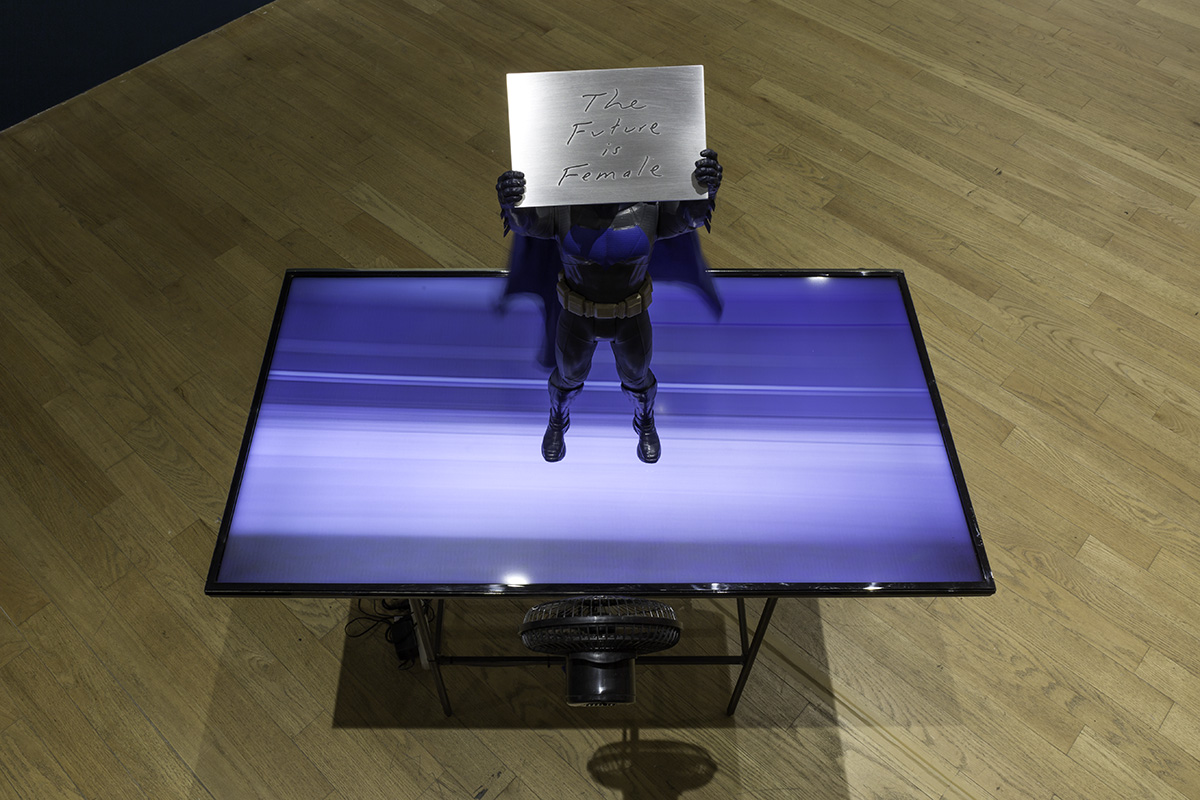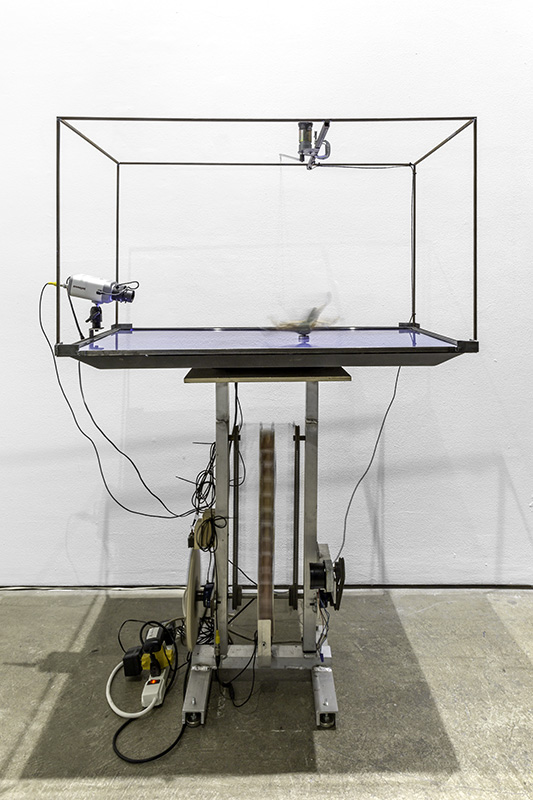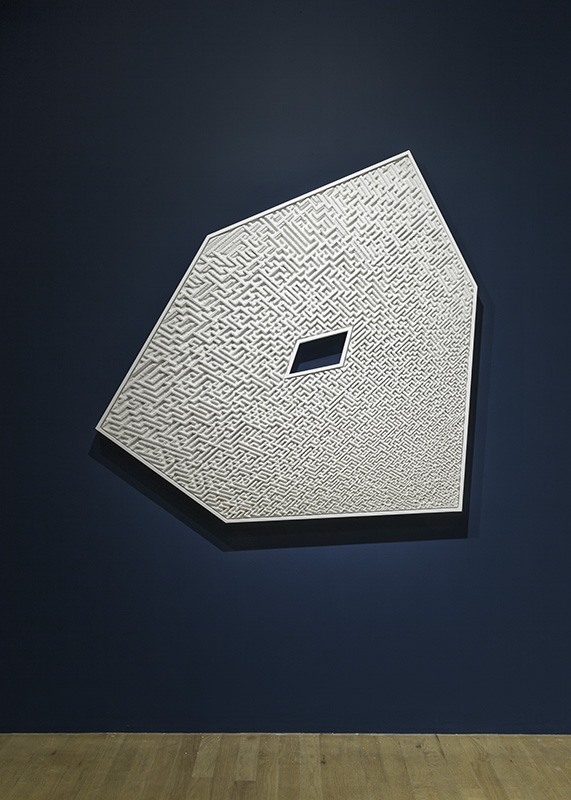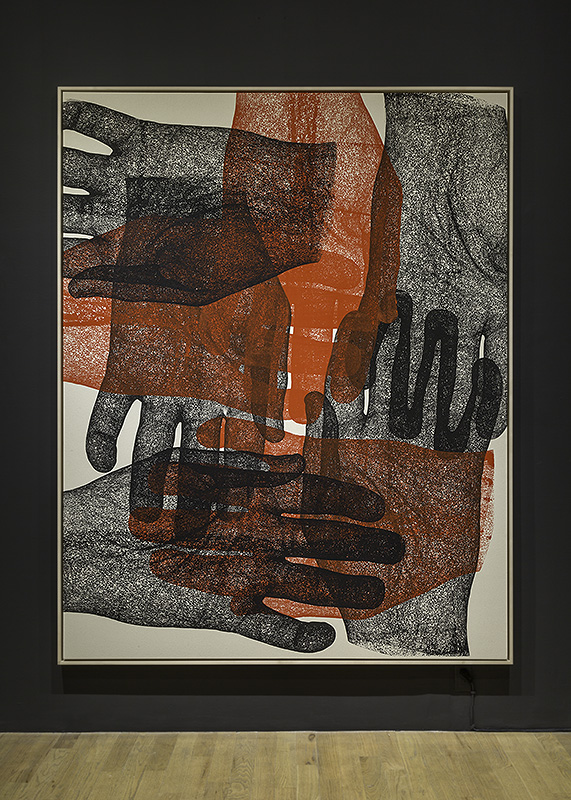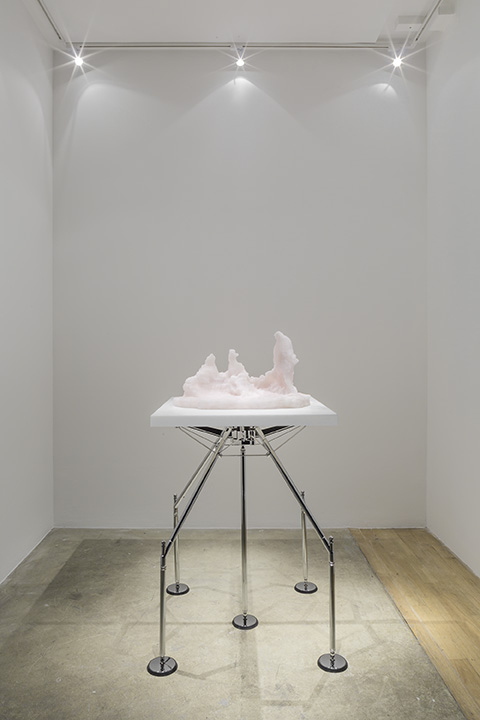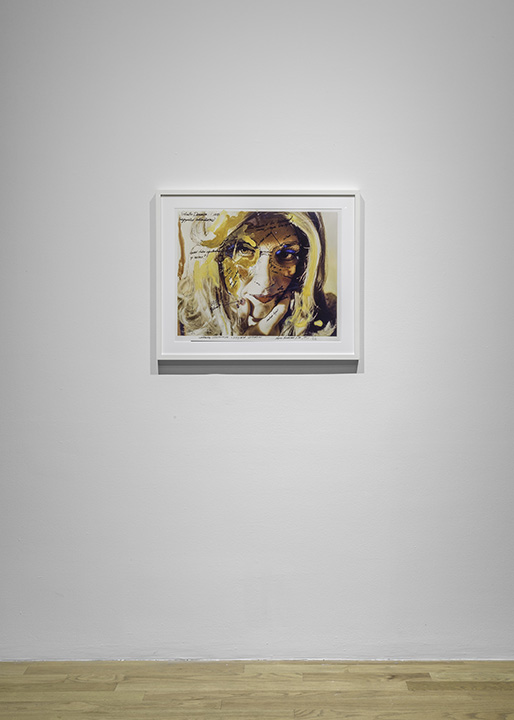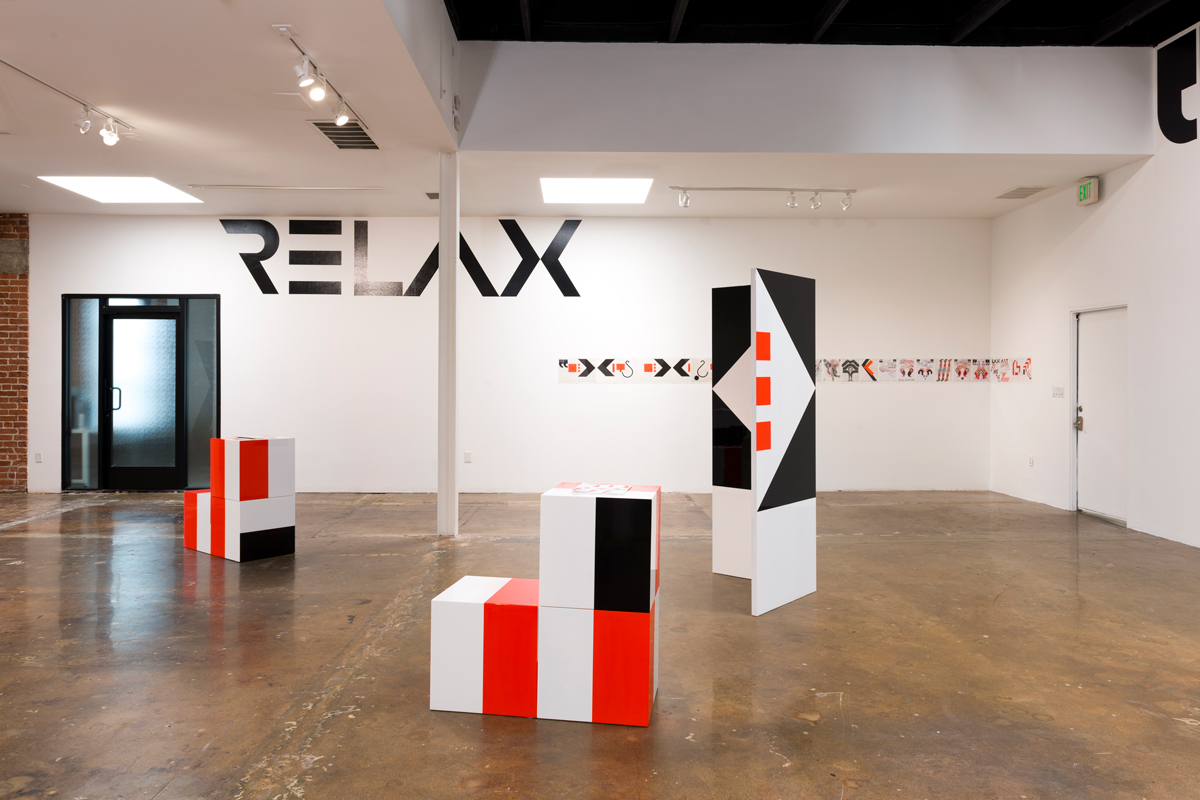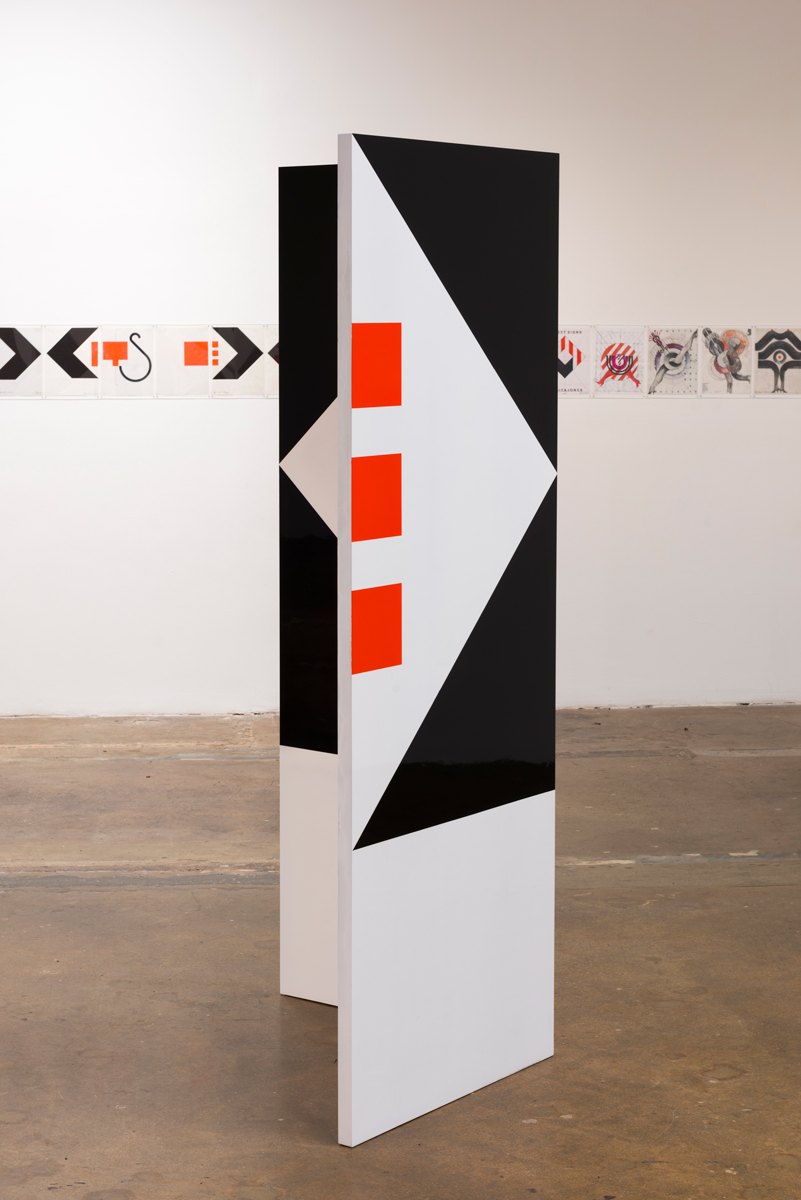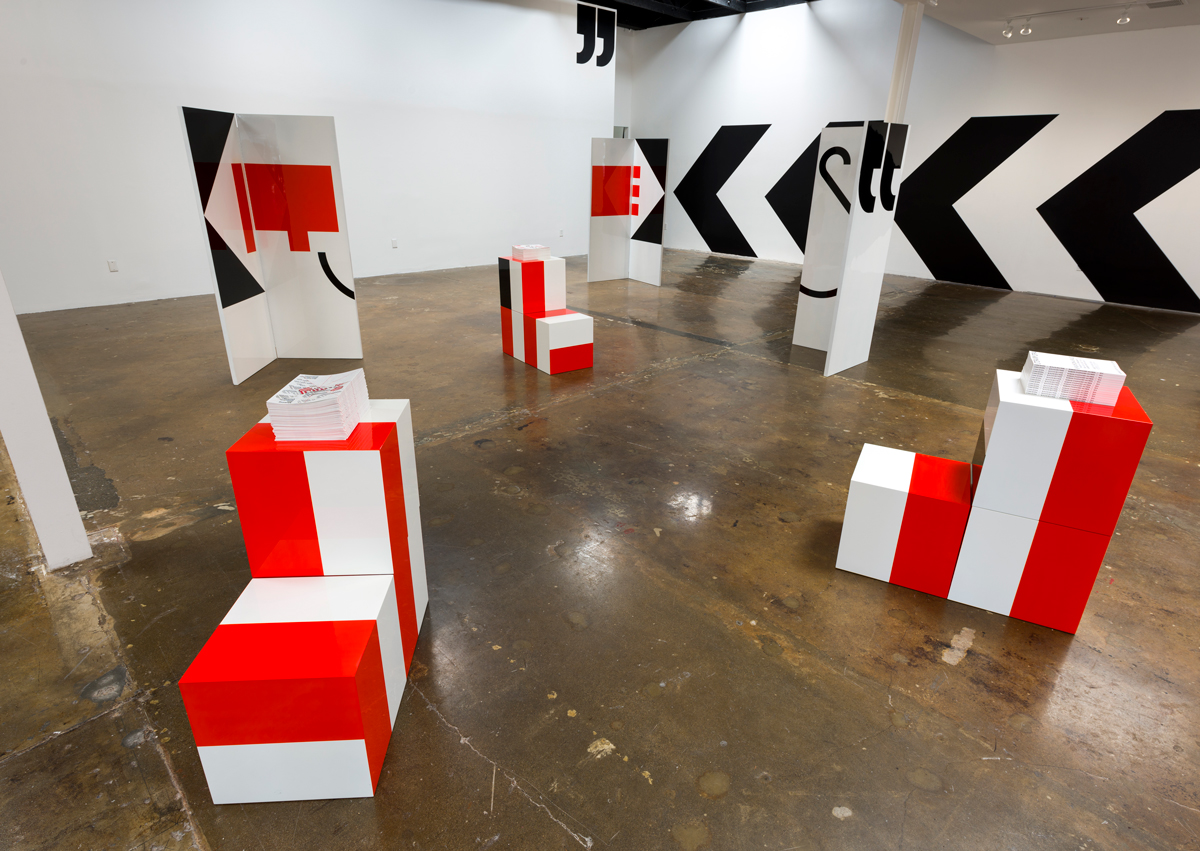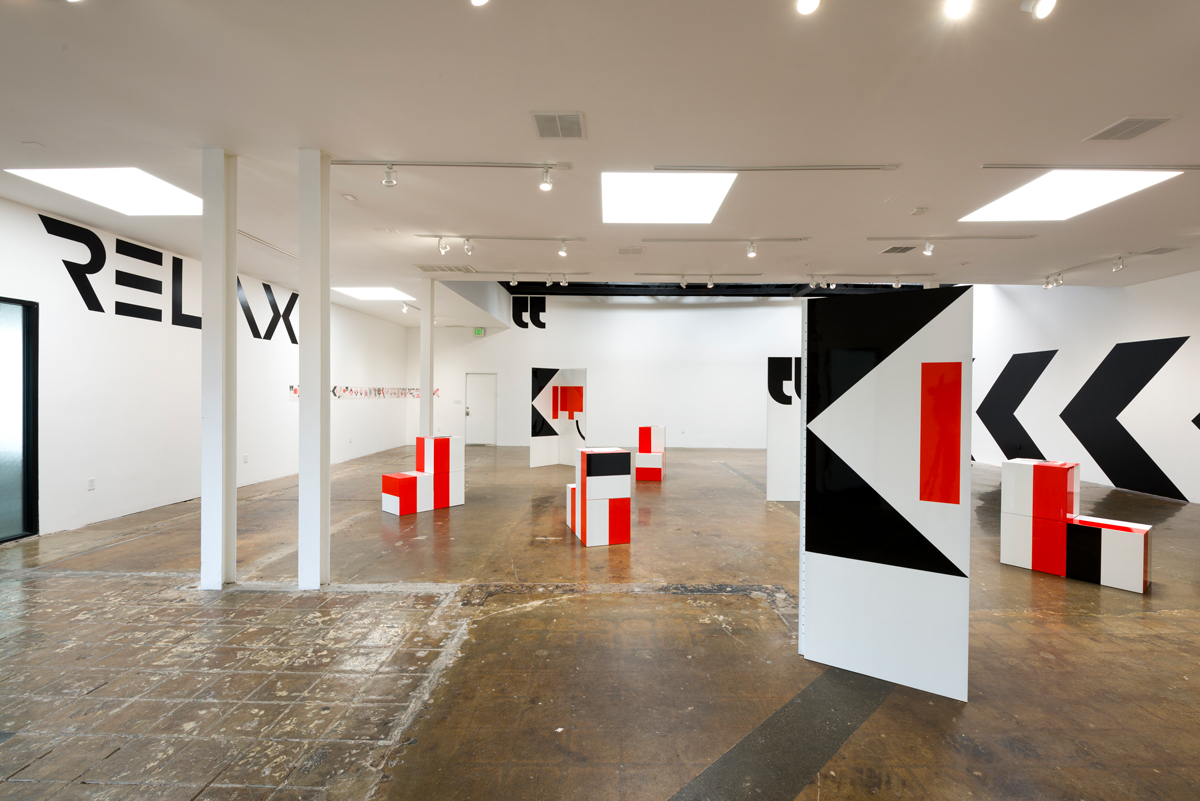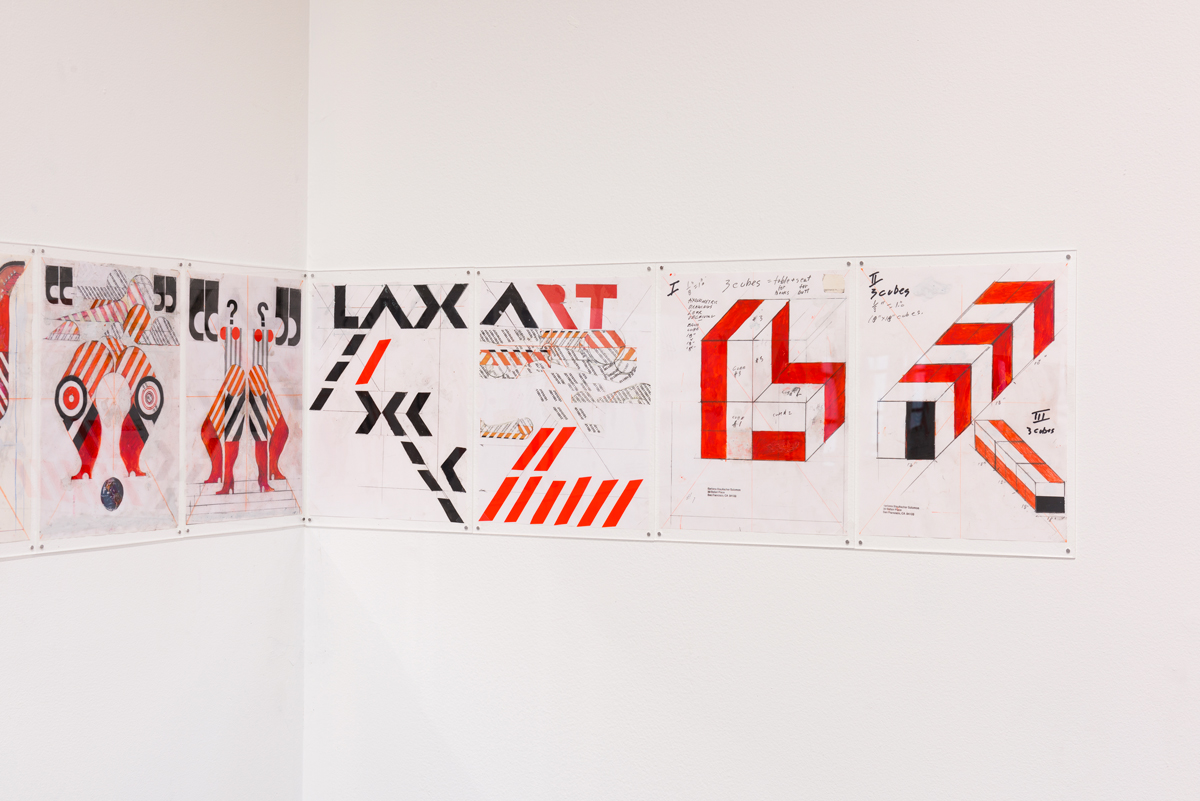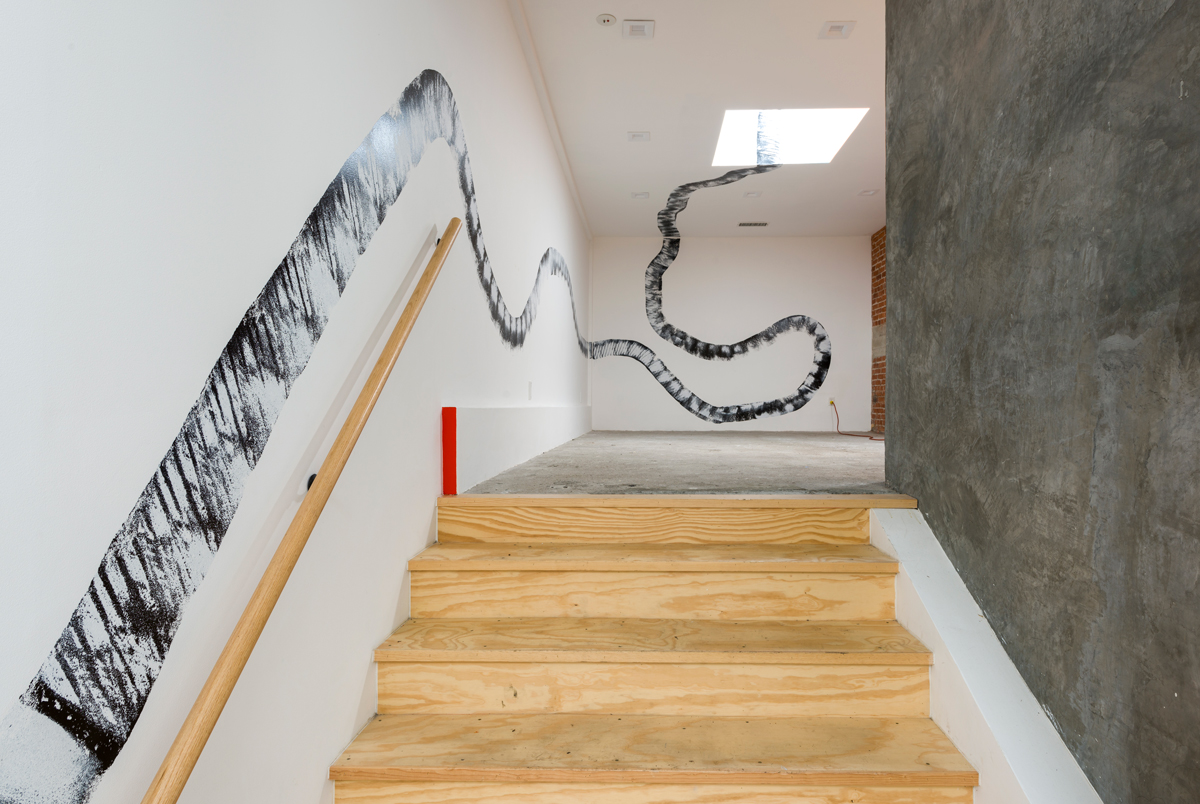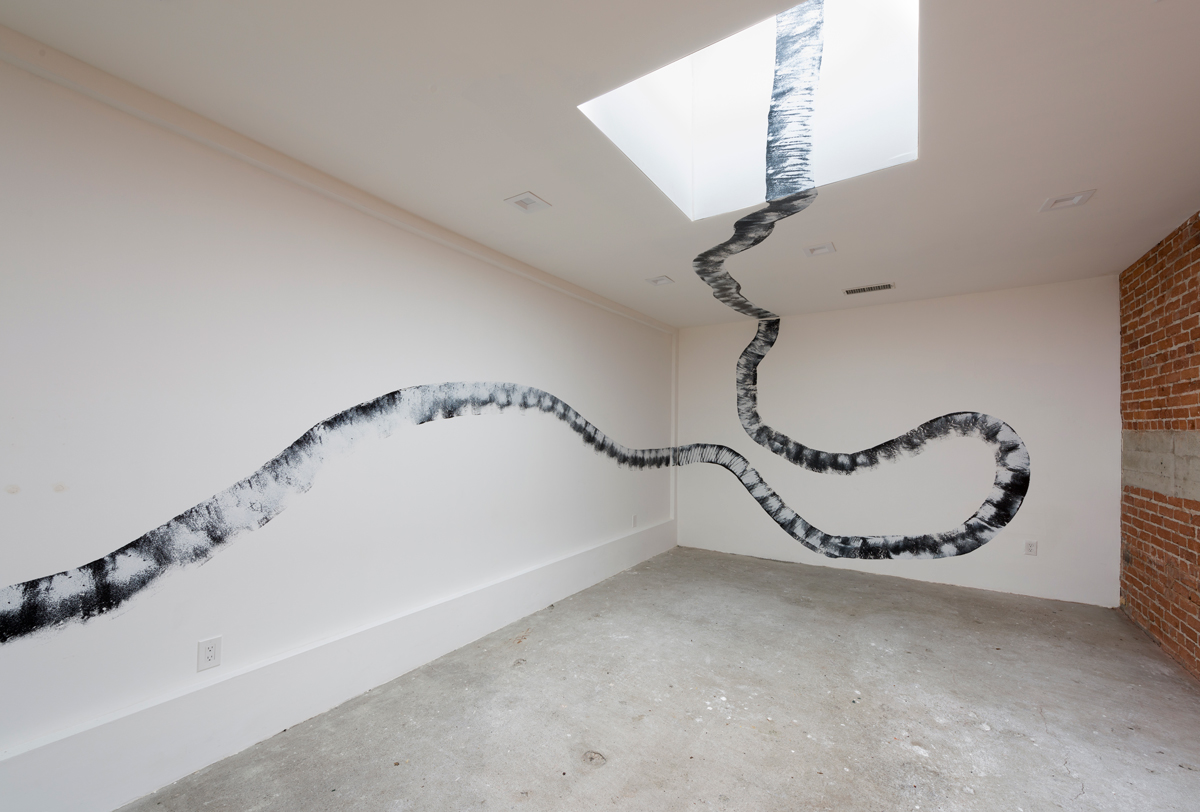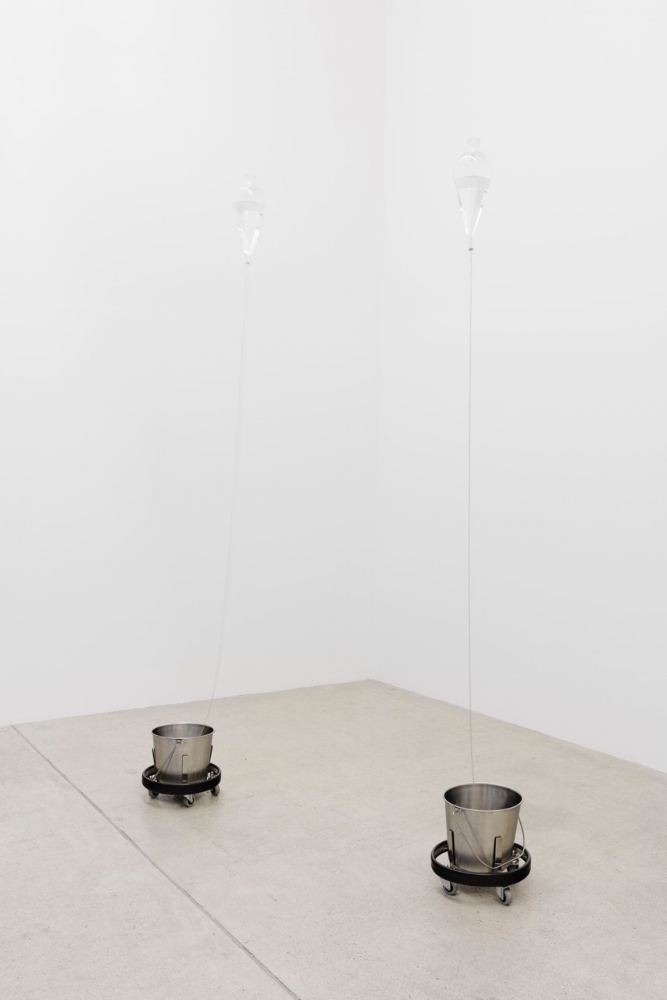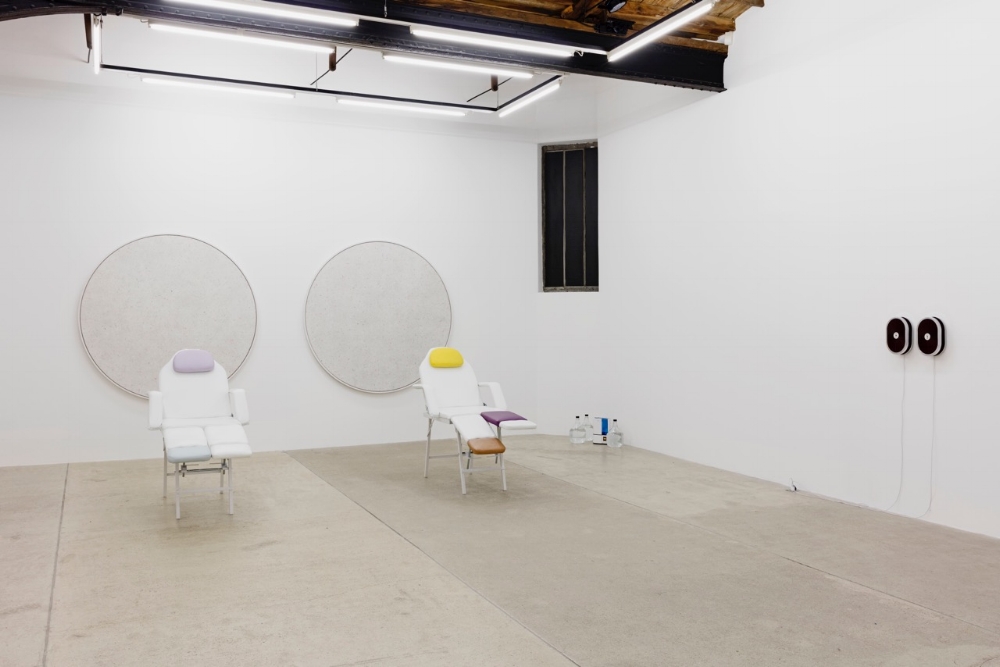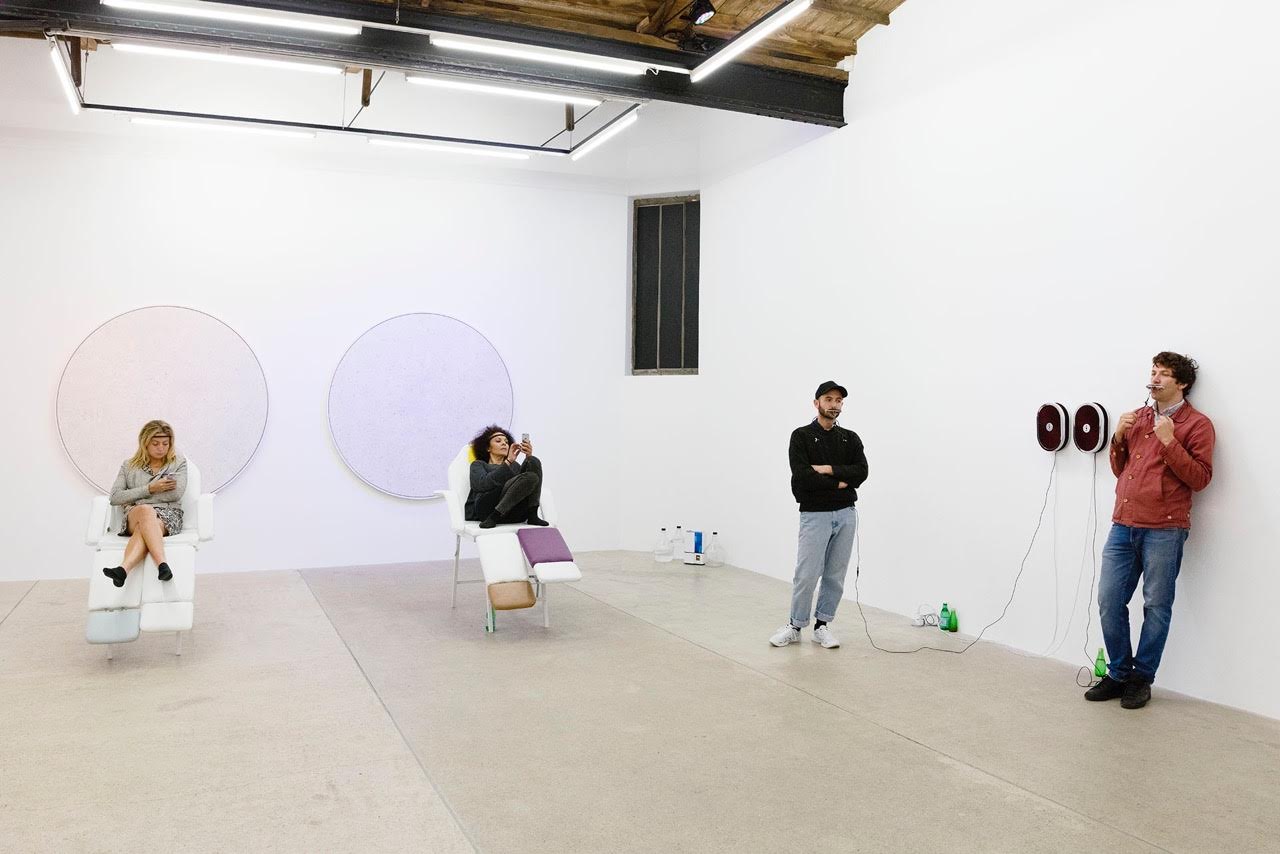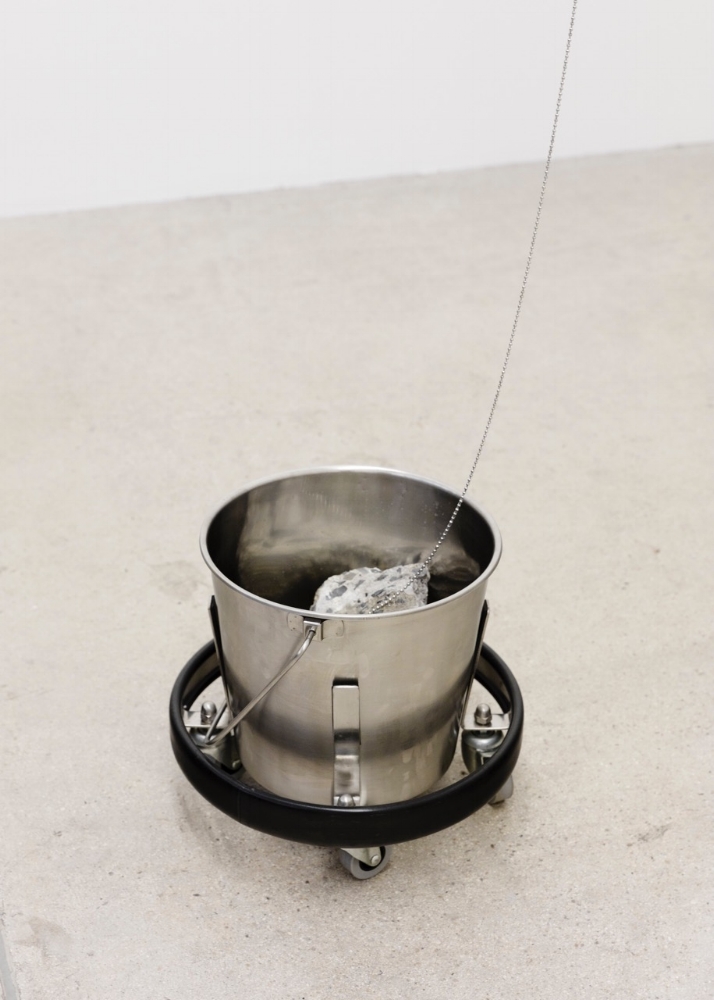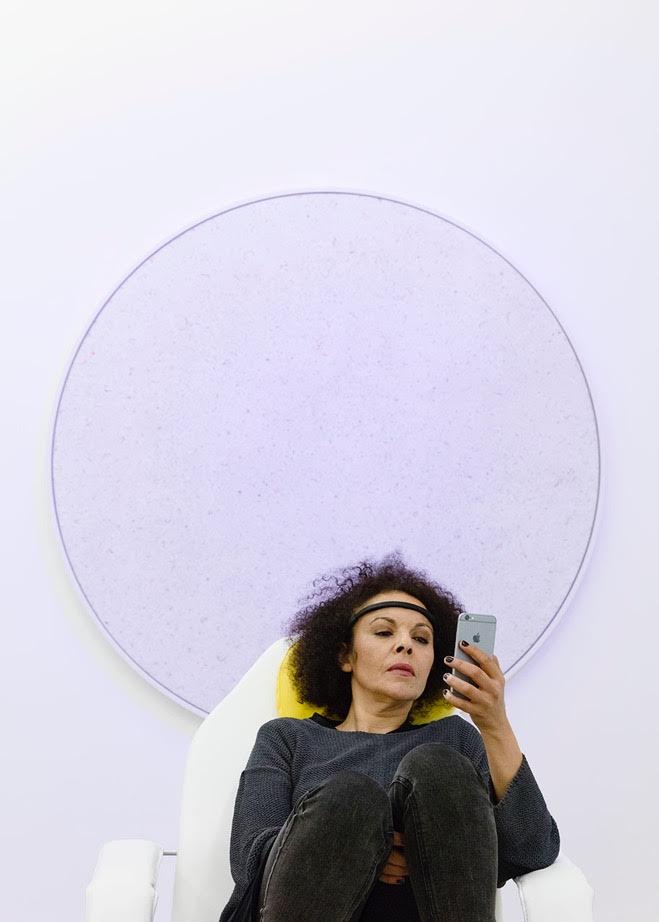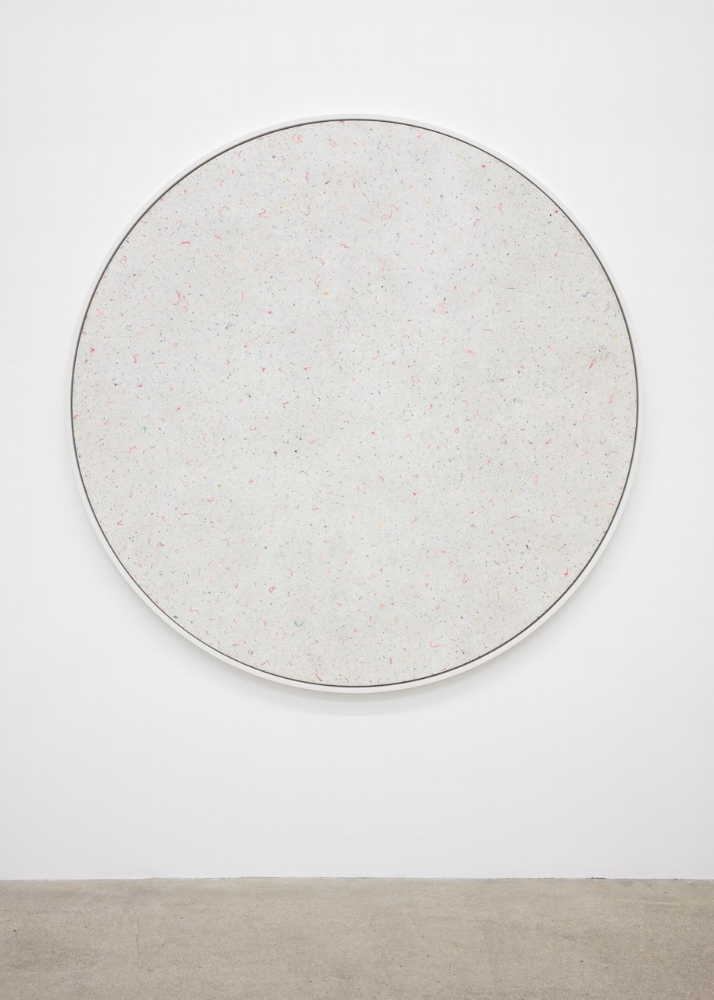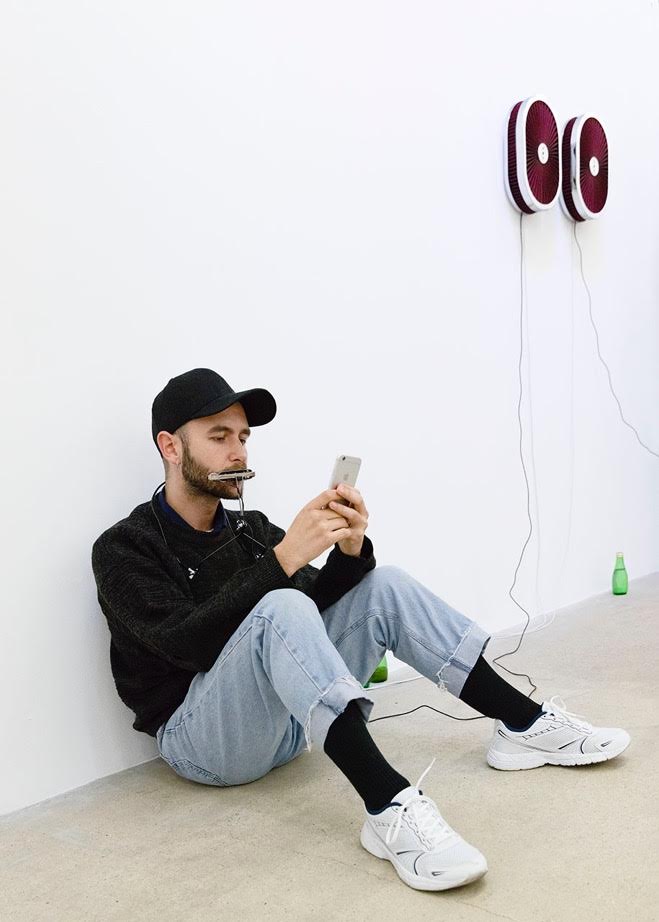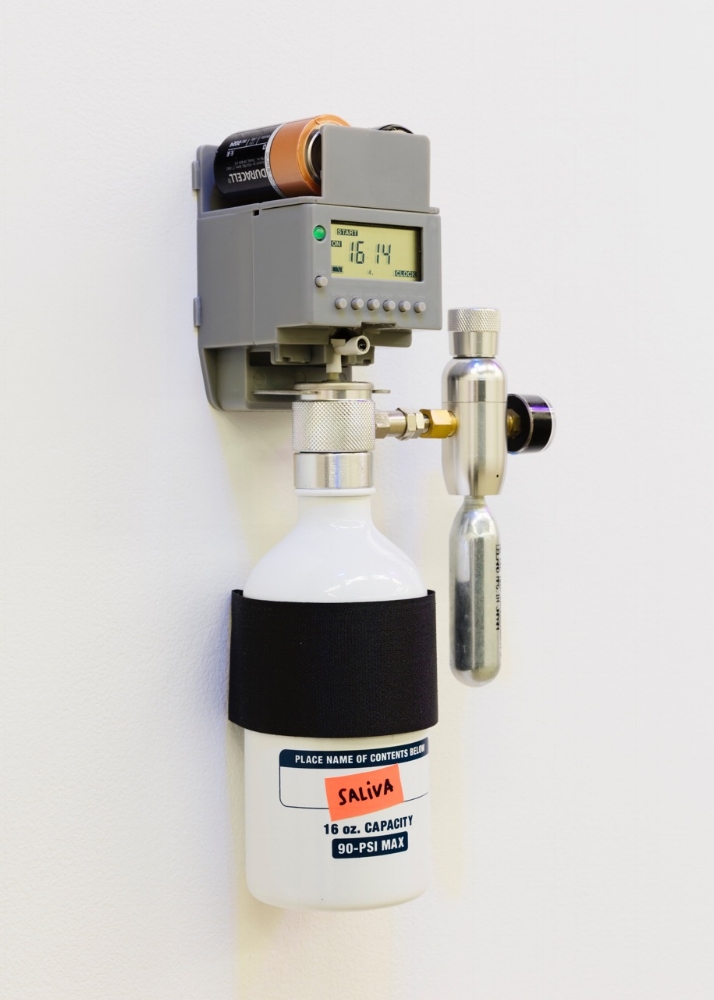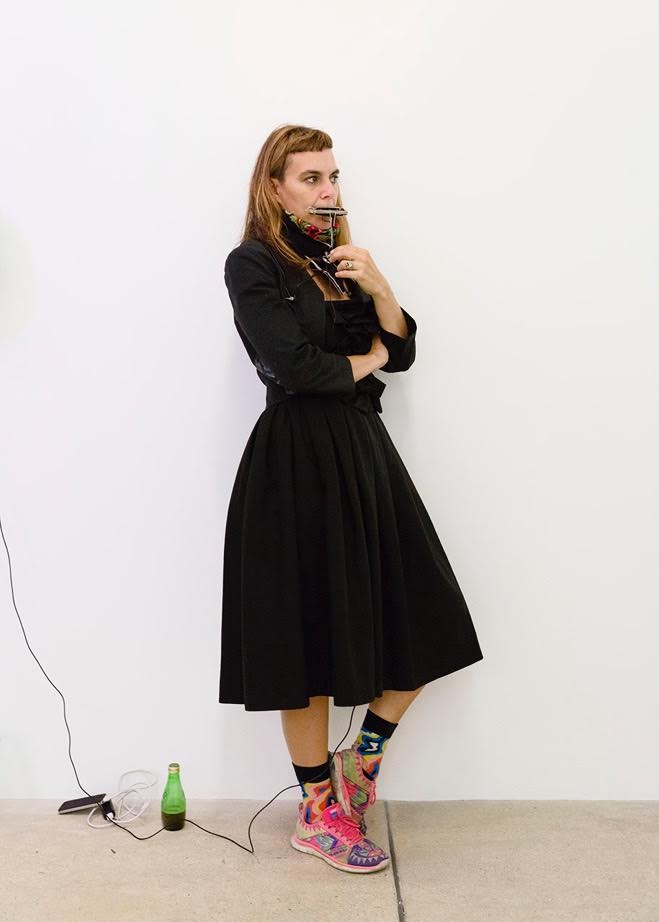Installation view, Lauren Lee McCarthy: Bodily Autonomy at UC San Diego Mandeville Art Gallery. March 2-May 25, 2024. Photo by Pablo Mason. With support from Creative Capital.
When asked to read through a long list of terms and conditions before giving consent, most of us have developed a reflexive response of scrolling to the bottom and trudging ahead. There’s a miniature risk/benefit analysis that we all conduct, which includes a completely unknown potential risk in the distant future, and the near future benefit of moving on. Time is such a valuable commodity that we regularly find ourselves sharing everything from personal data, browsing data, biometric data, and more. Oftentimes, there’s no contract at all. You may have thought you were showing all of your friends how your looks changed from 2009 to 2019, but you were really training someone’s private surveillance software. The list of myopic, nefarious applications that we serve by giving ourselves away to faceless data farms in exchange for what often amounts to a forgettable laugh is endless. In Lauren Lee McCarthy’s Bodily Autonomy exhibition at UC San Diego’s Mandeville Art Gallery, she explores two very specific aspects of the way that we engage with science and technology. With “Surrogate,” she created an application where couples and individuals who are interested in hiring her as a surrogate mother are invited to dictate everything from her eating and sleeping habits, to her daily activities, and more. While these requests are not actually fulfilled, the application itself challenges notions of reproduction, genetic selection, and commerce. With “Saliva” she has created a saliva exchange station that is activated every Thursday from 6-8pm where visitors are invited to give and receive samples of their own saliva. Each participant is given agency to label their sample as they prefer and they provide the conditions for what happens to it (scout’s honor). Doreen A. Ríos, a PhD candidate in Art History, Theory, and Criticism at UC San Diego and an independent curator and researcher, spoke with McCarthy to discuss the implications of these technologies and the imperative within the work to embody a more transparent form of participation. Read more.





